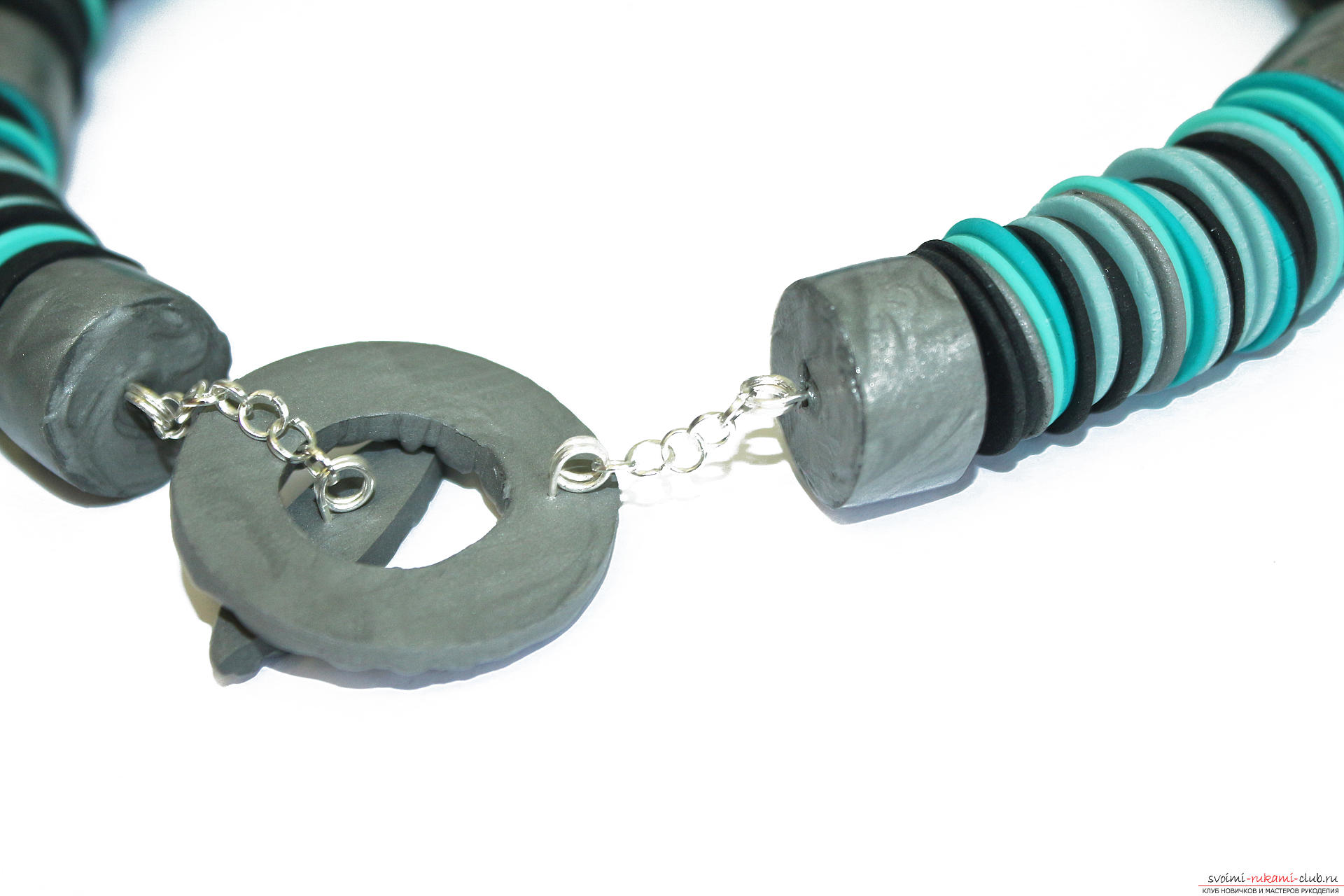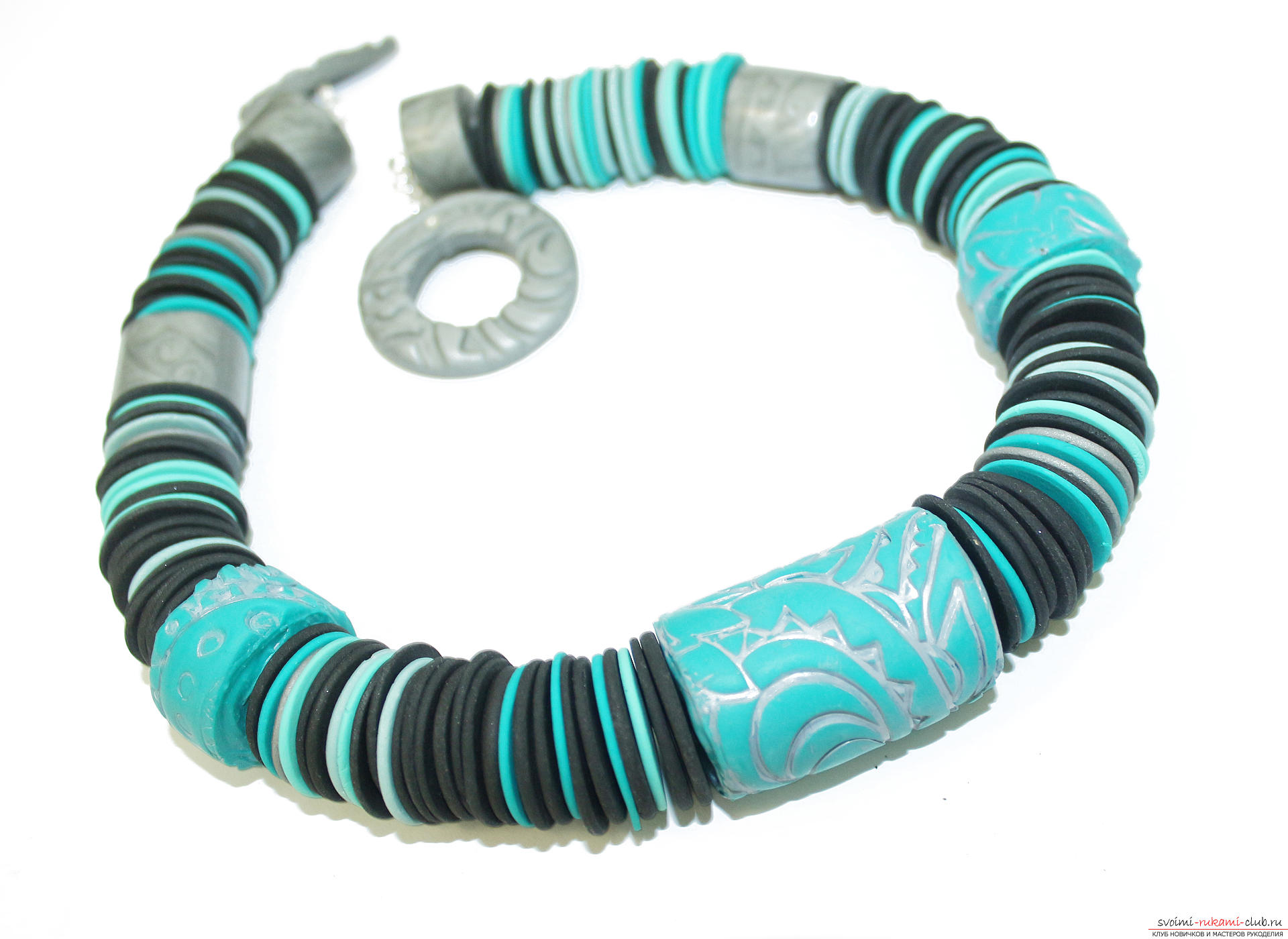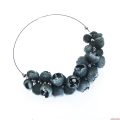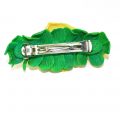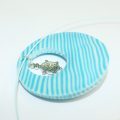
This detailed master class will teach how to make an ornament of polymer clay - beads in the ethno-style with their own hands.
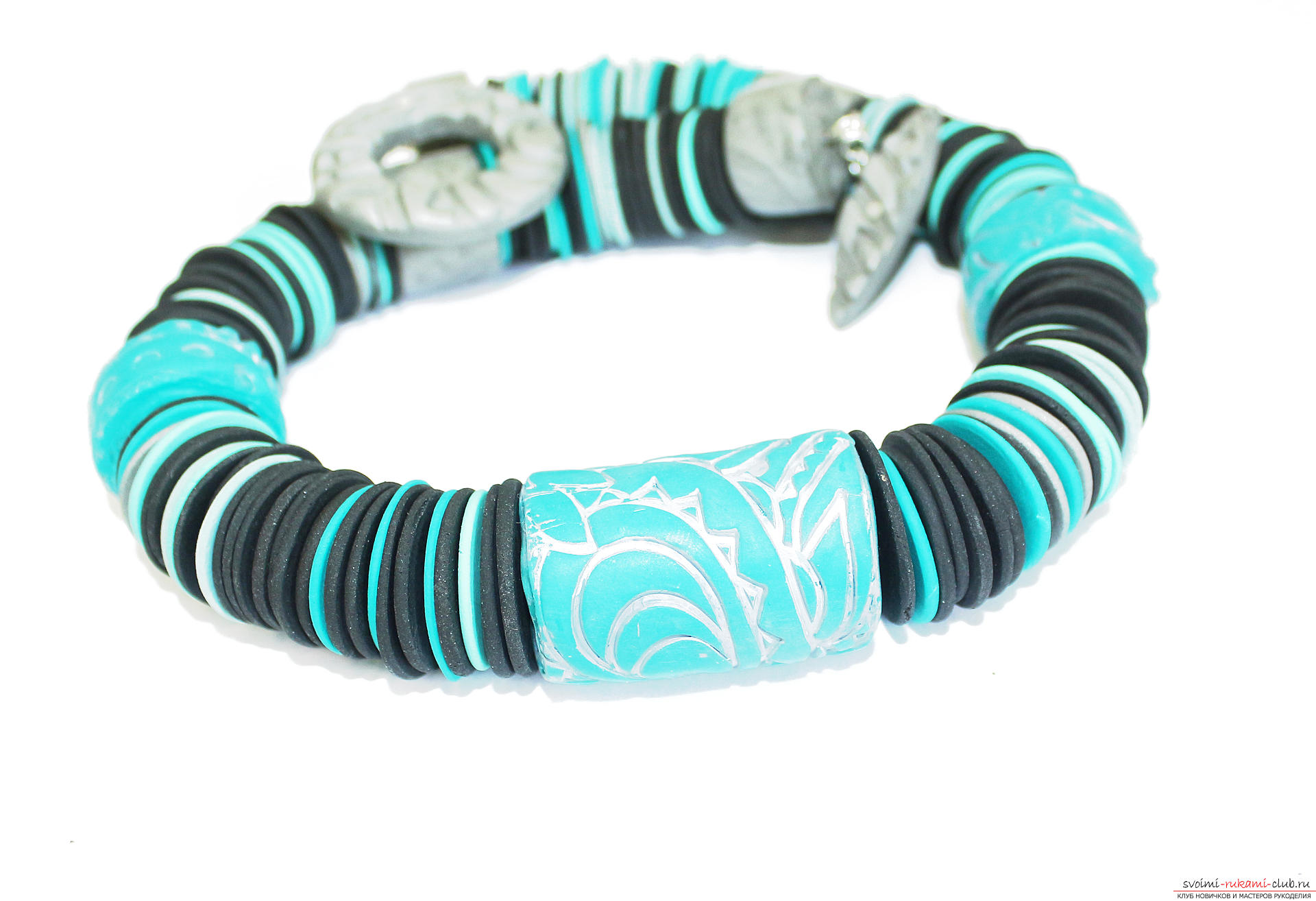 In creating jewelry made of polymer clay - beads inethno-style with our own hands - we will use the following materials: - Plastic black, blue, gray-blue, rich green-blue and silver colors - Liquid plastic (Fimo-gel) - Texture mat - Roller - Blade - A bit of multicolored (weed) plastics - Toothpicks - Glossy varnish for plastics - Nylon thread - 4 long pins with a hat - Several small sheets of paper - Nail polish remover - Cotton wheels - 2 round cutters - 4 and 2 cm - Round nose pliers - Connecting rings - Super glue - Gray acrylic cr ska - Brush - Needle
In creating jewelry made of polymer clay - beads inethno-style with our own hands - we will use the following materials: - Plastic black, blue, gray-blue, rich green-blue and silver colors - Liquid plastic (Fimo-gel) - Texture mat - Roller - Blade - A bit of multicolored (weed) plastics - Toothpicks - Glossy varnish for plastics - Nylon thread - 4 long pins with a hat - Several small sheets of paper - Nail polish remover - Cotton wheels - 2 round cutters - 4 and 2 cm - Round nose pliers - Connecting rings - Super glue - Gray acrylic cr ska - Brush - Needle 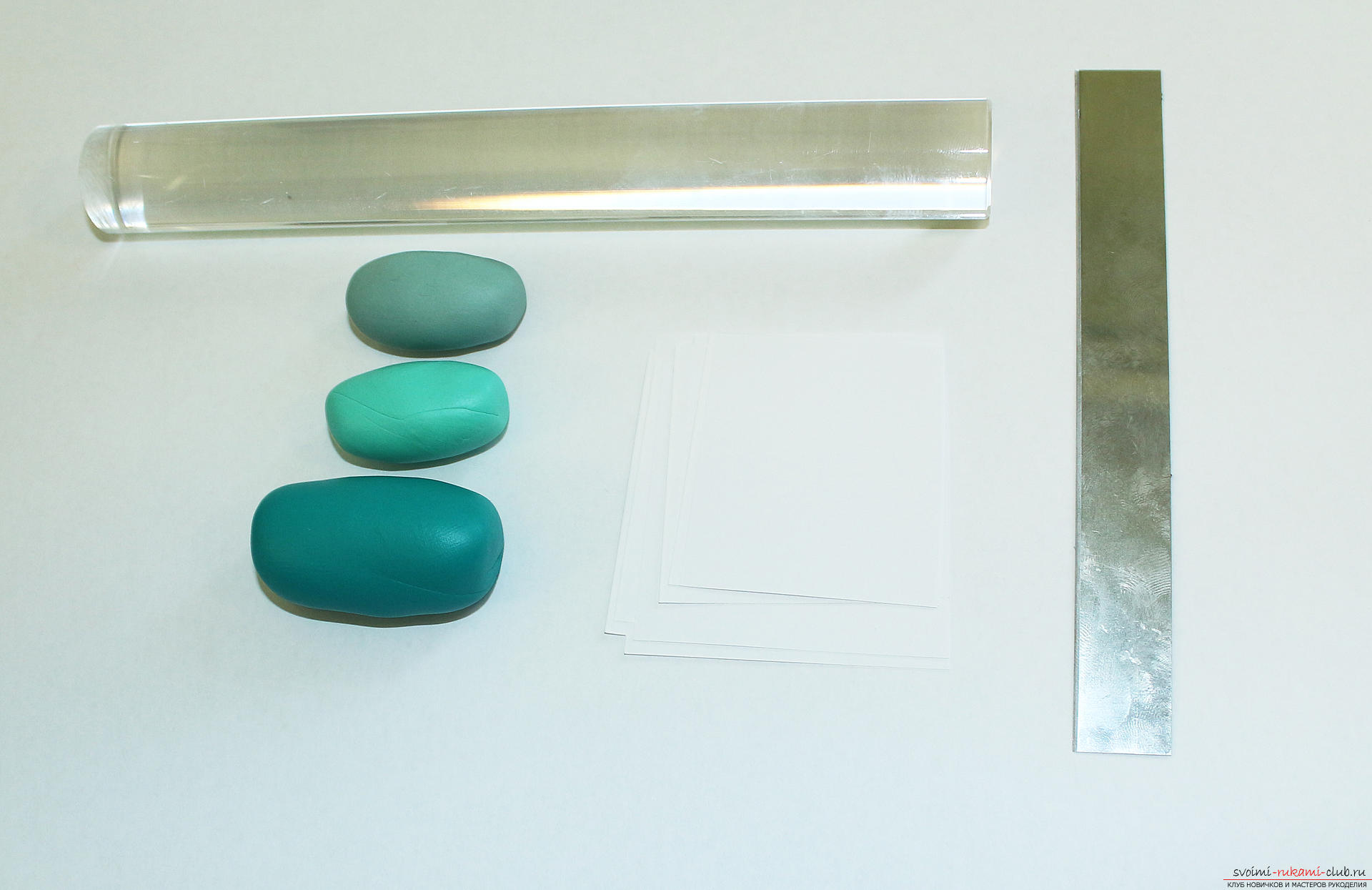 From blue shades we roll sausages with a diameter of 7-8 mm.
From blue shades we roll sausages with a diameter of 7-8 mm. 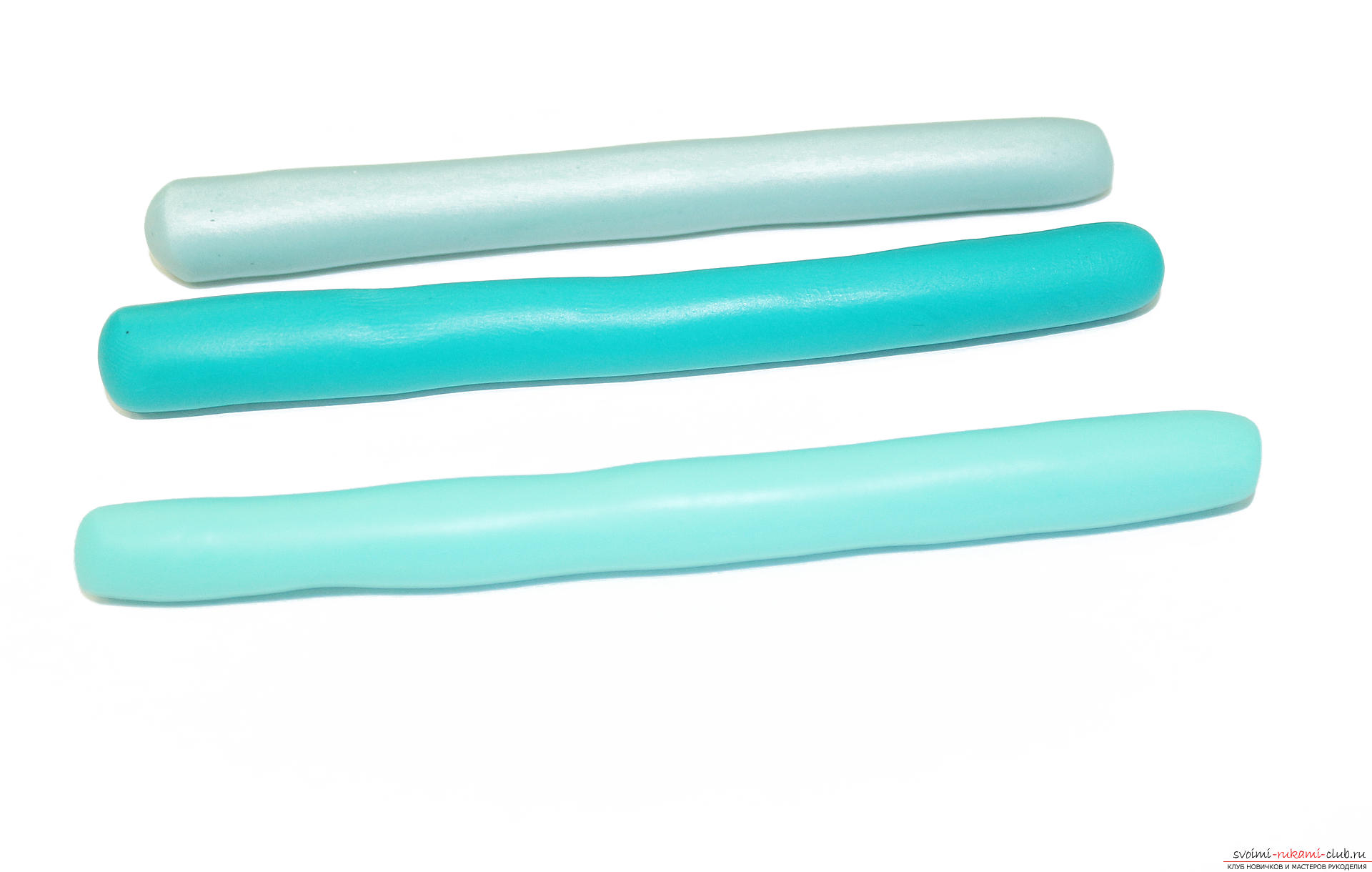 We cut them into identical pieces with a blade.
We cut them into identical pieces with a blade.  We roll balls from these pieces.
We roll balls from these pieces. 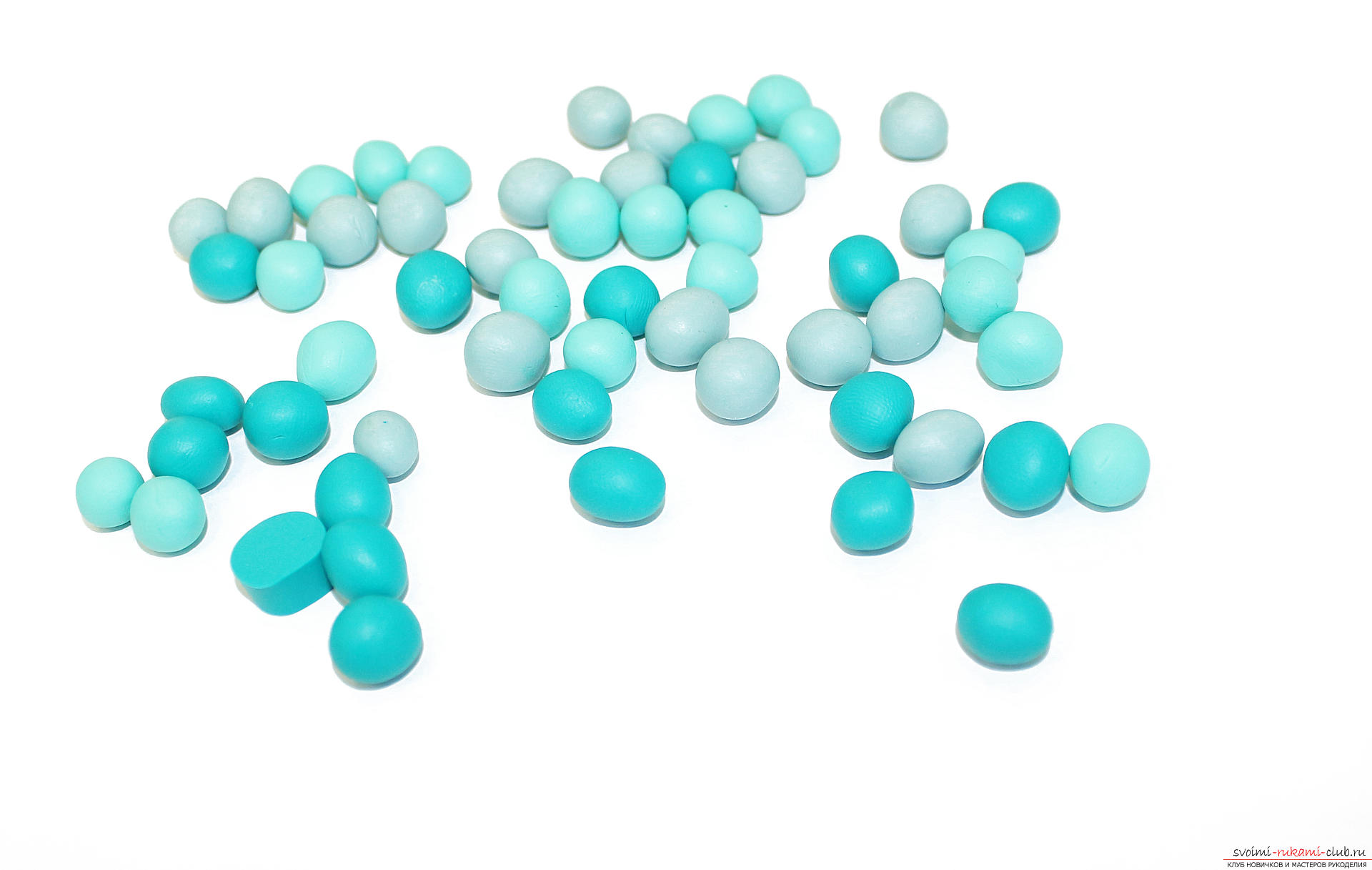 We put a ball on a sheet of paper. Cover it with a small piece of paper.
We put a ball on a sheet of paper. Cover it with a small piece of paper. 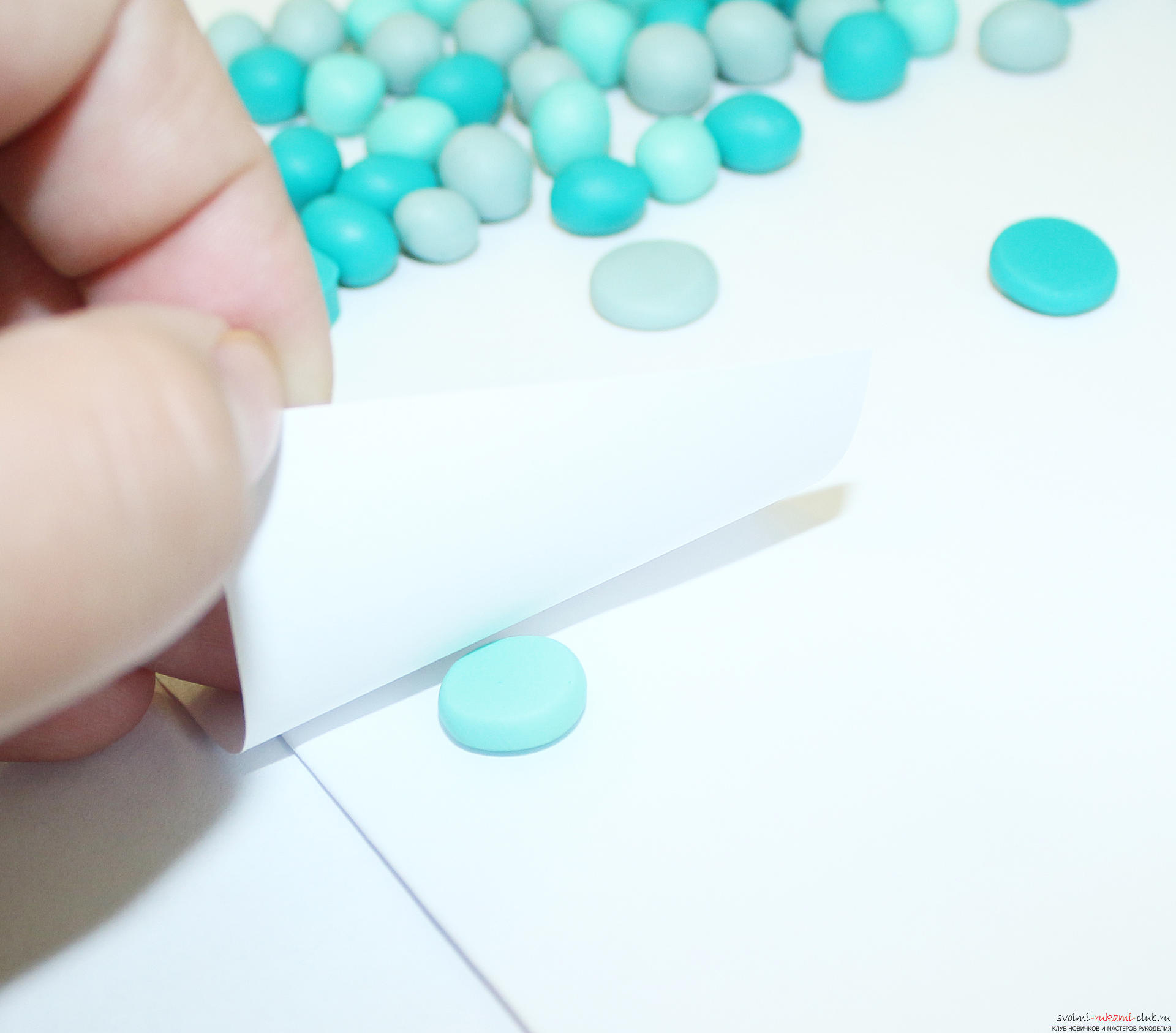 With a rolling pin, press the ball against the paper, turning the ball into a pancake.
With a rolling pin, press the ball against the paper, turning the ball into a pancake. 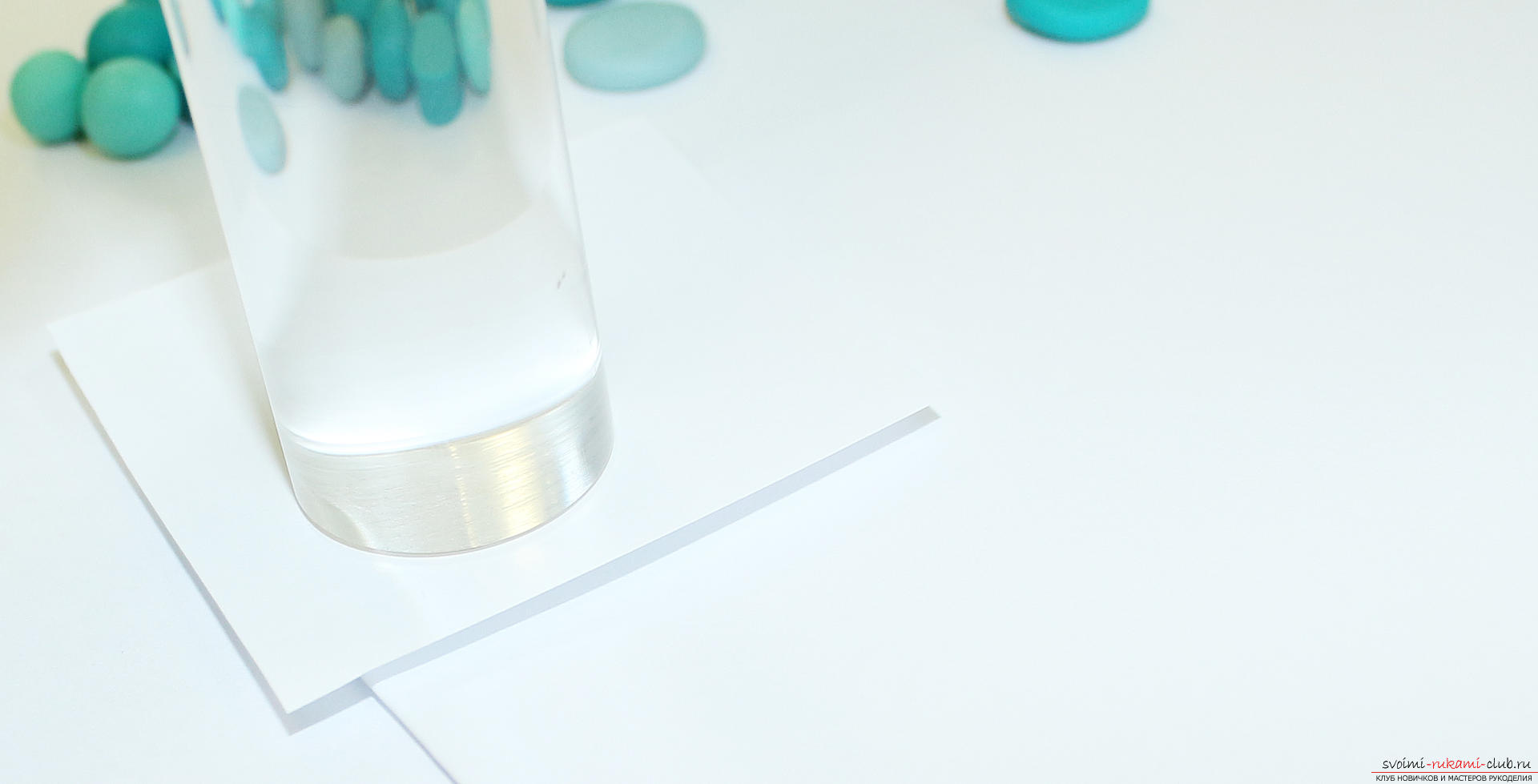 It turns out a neat round shape.
It turns out a neat round shape. 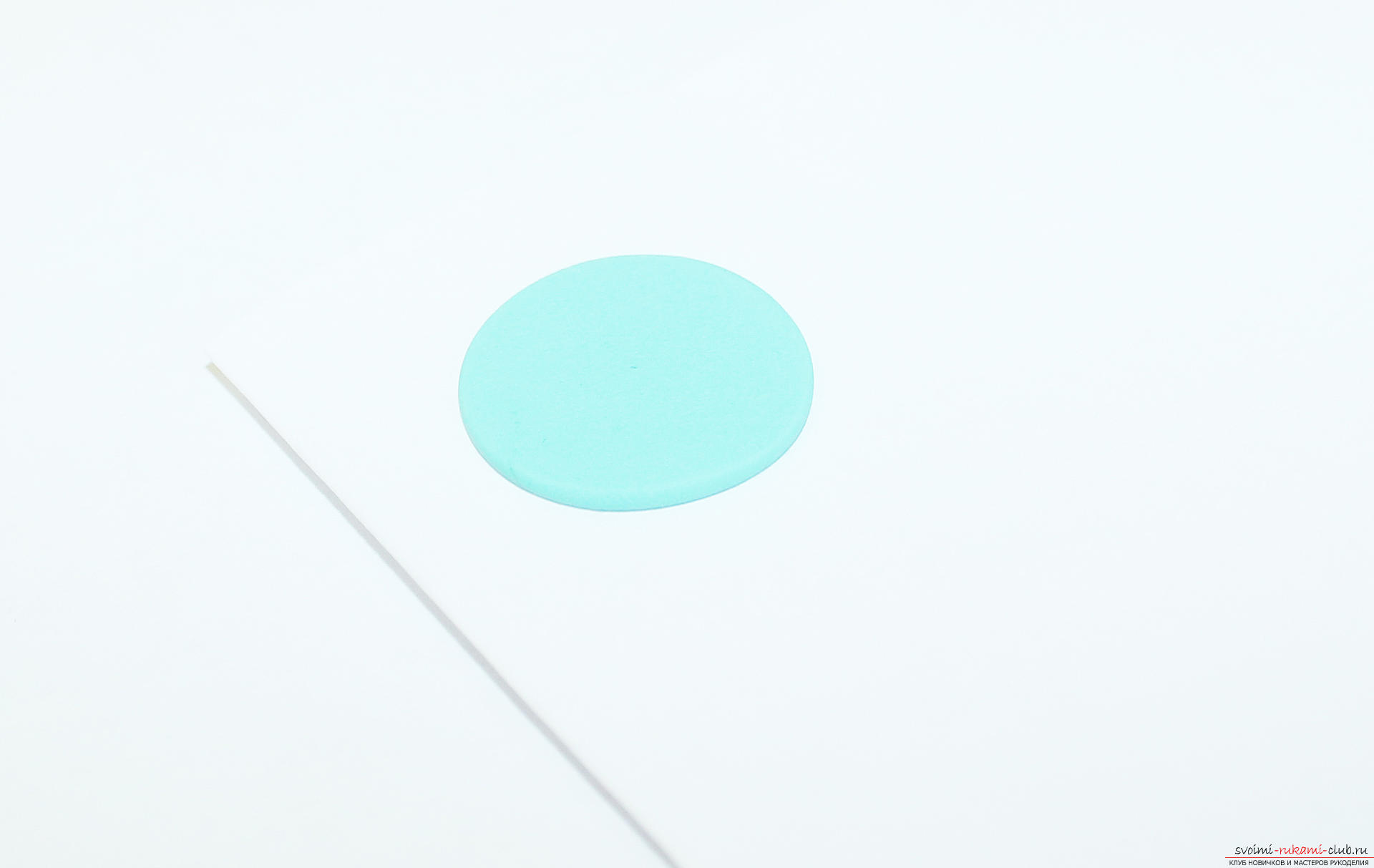 With a toothpick in the center, make a hole.
With a toothpick in the center, make a hole. 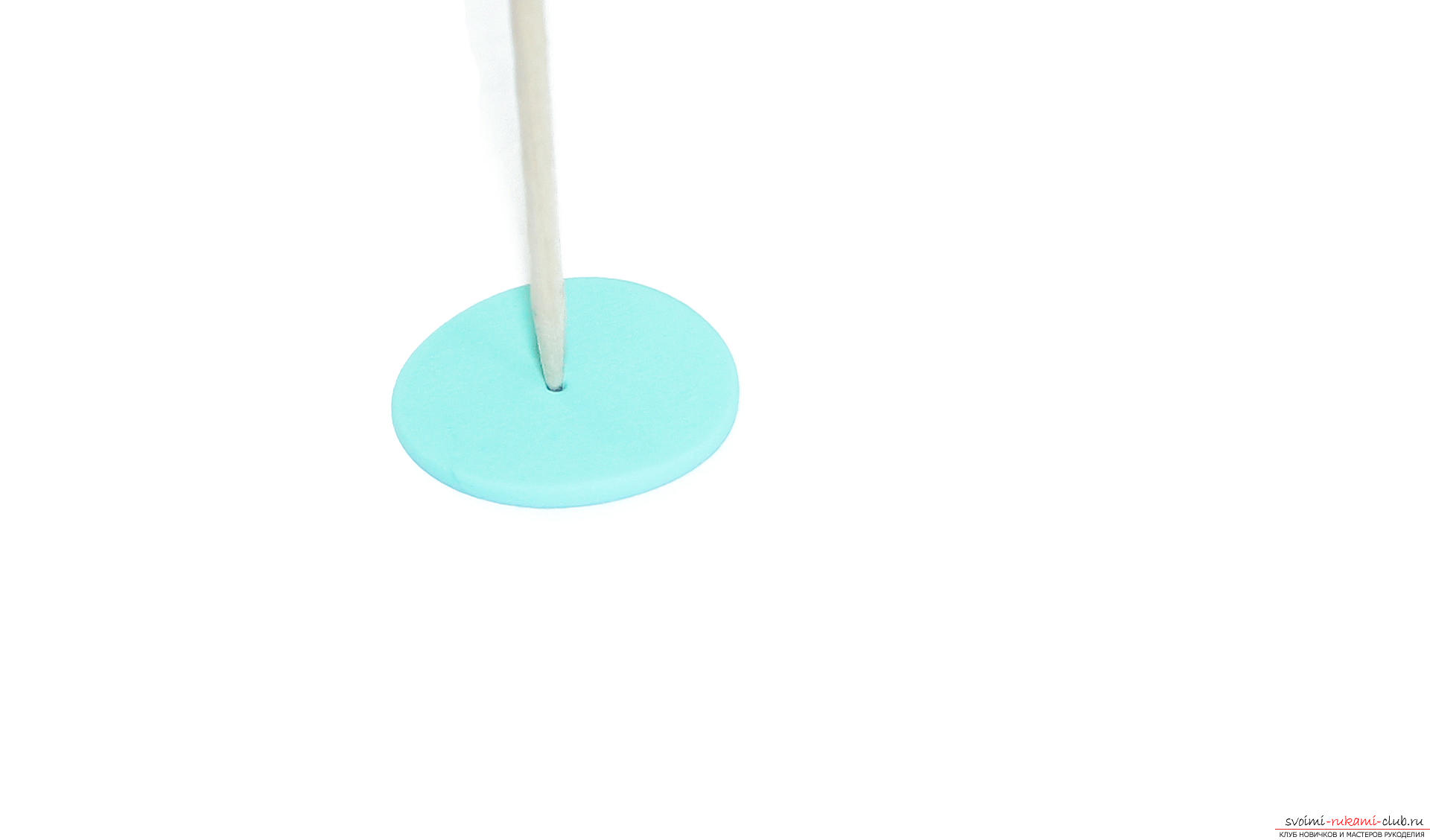 We repeat it many times, thus we form beads-chips.
We repeat it many times, thus we form beads-chips. 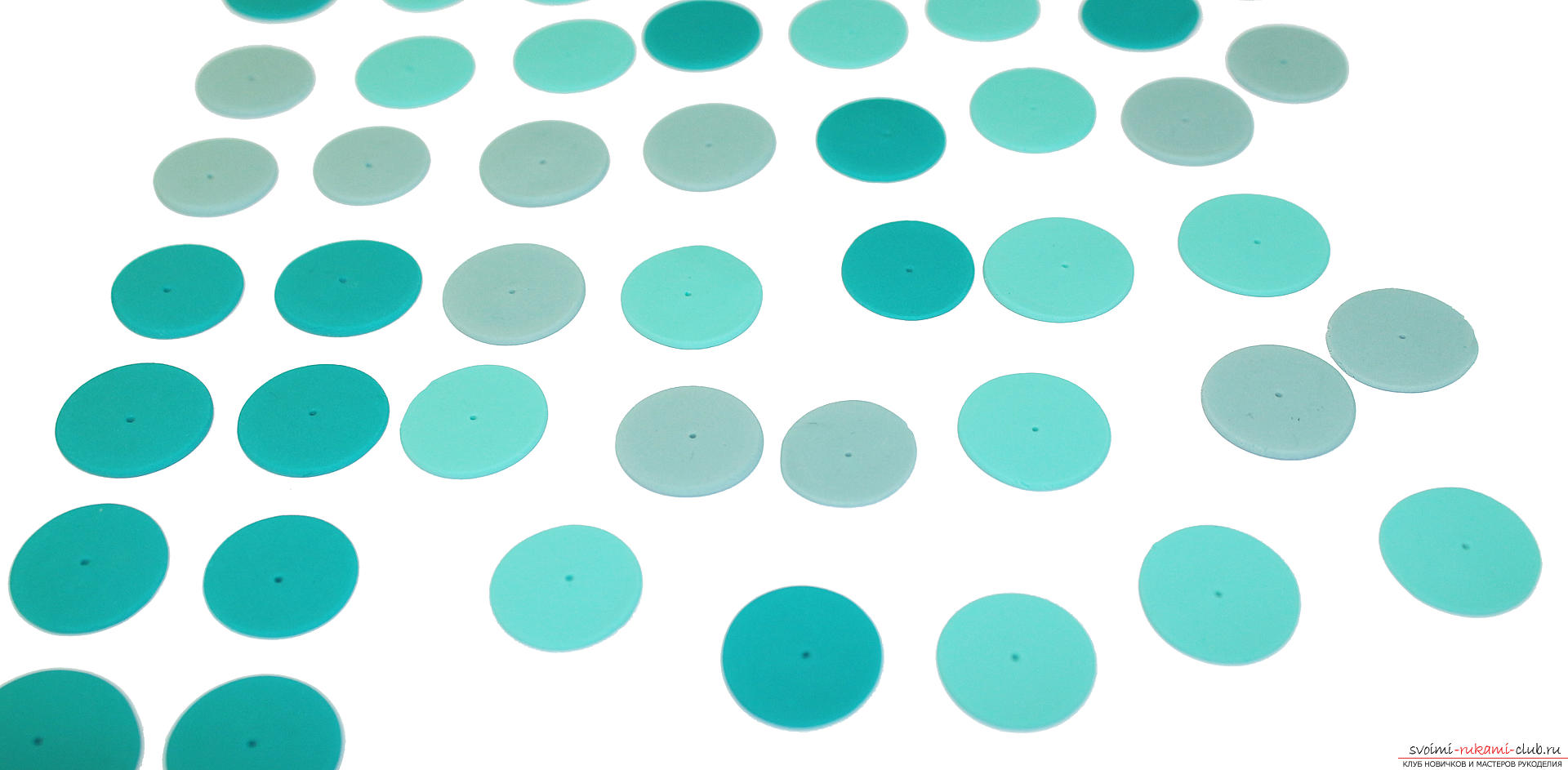 The same thing we do with black plastic, bake.
The same thing we do with black plastic, bake. 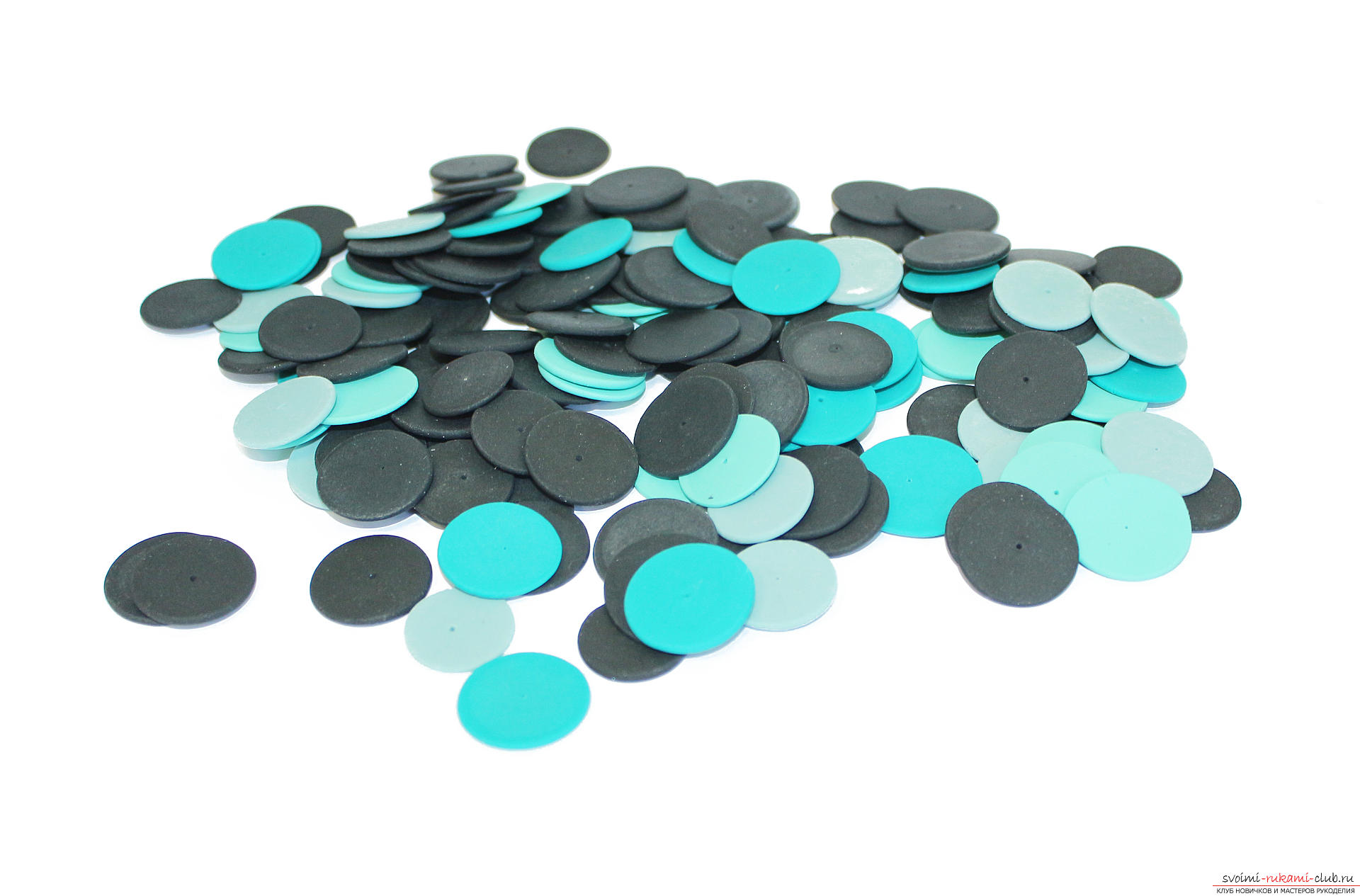 We cook and knead pieces of weed plastics, now we will use a rug with texture to create textured beads and beads in the technique of mika-shift.
We cook and knead pieces of weed plastics, now we will use a rug with texture to create textured beads and beads in the technique of mika-shift. 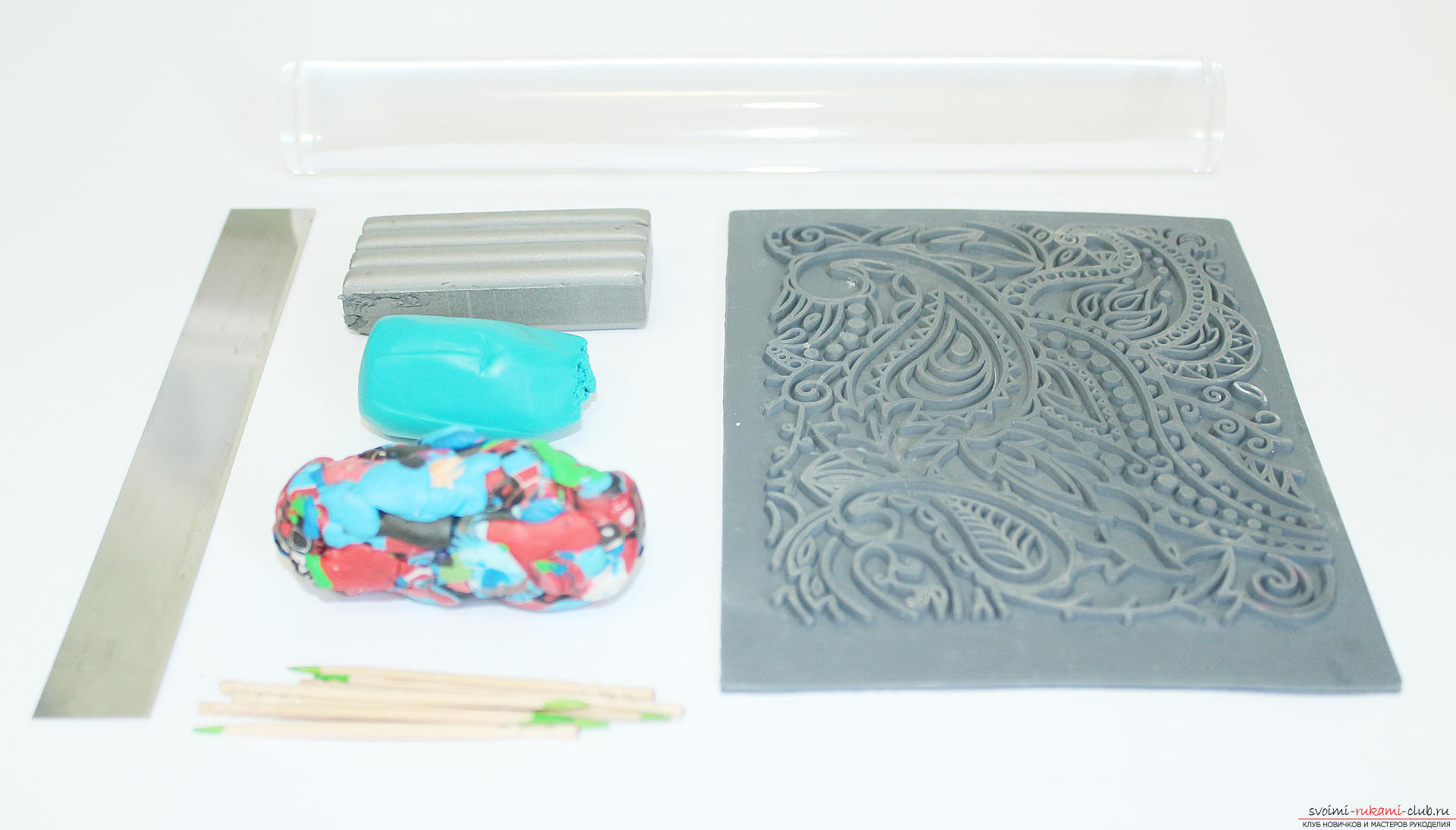 Roll out the silver plastic and print the texture on it.
Roll out the silver plastic and print the texture on it. 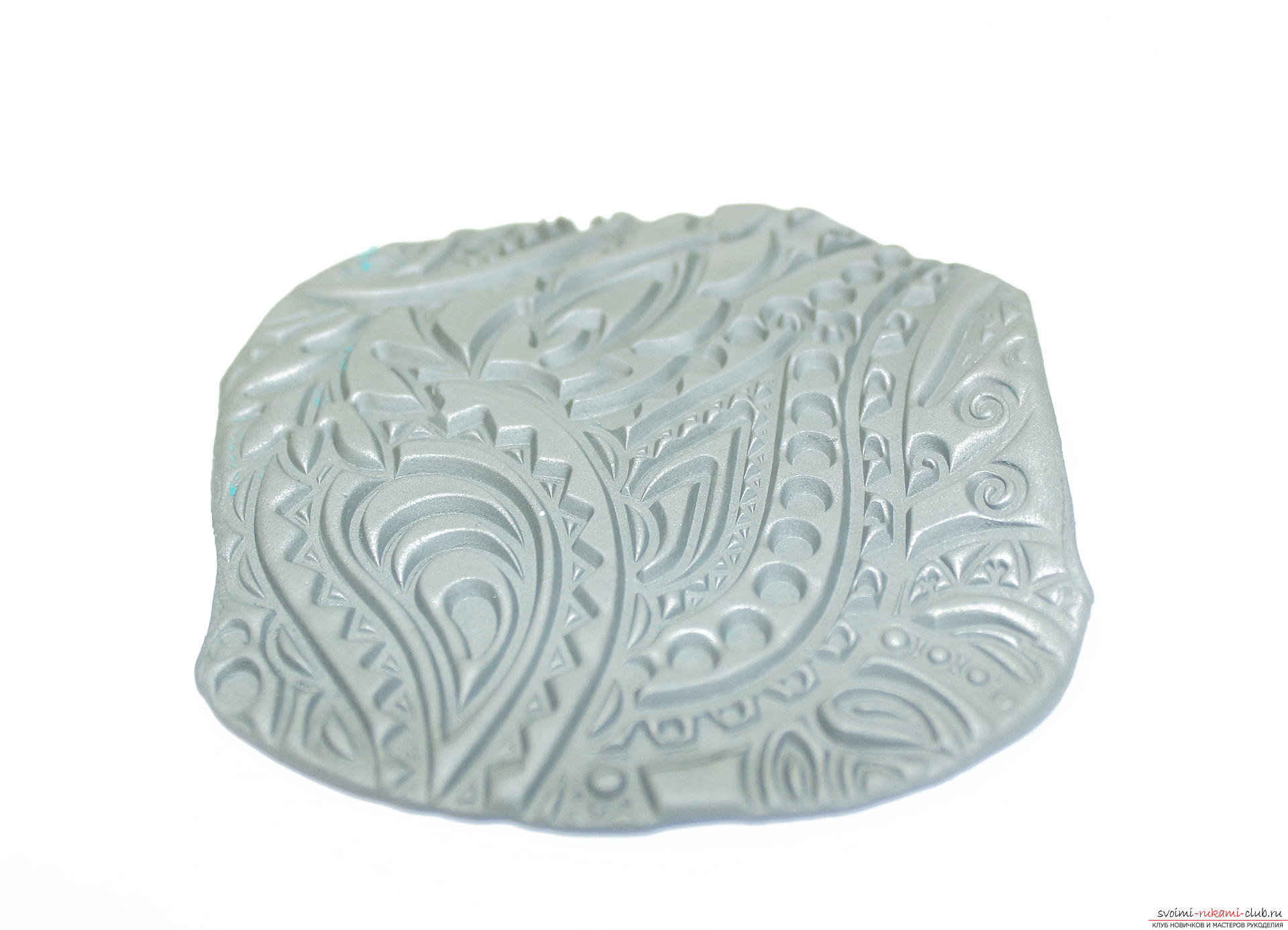 Blade gently cut all the convex parts of the picture.
Blade gently cut all the convex parts of the picture.  It is necessary to obtain an even surface, but not to damage the pattern that was formed due to the shift of pigment particles in silver plastics. Small defects are rolled with a rolling pin.
It is necessary to obtain an even surface, but not to damage the pattern that was formed due to the shift of pigment particles in silver plastics. Small defects are rolled with a rolling pin. 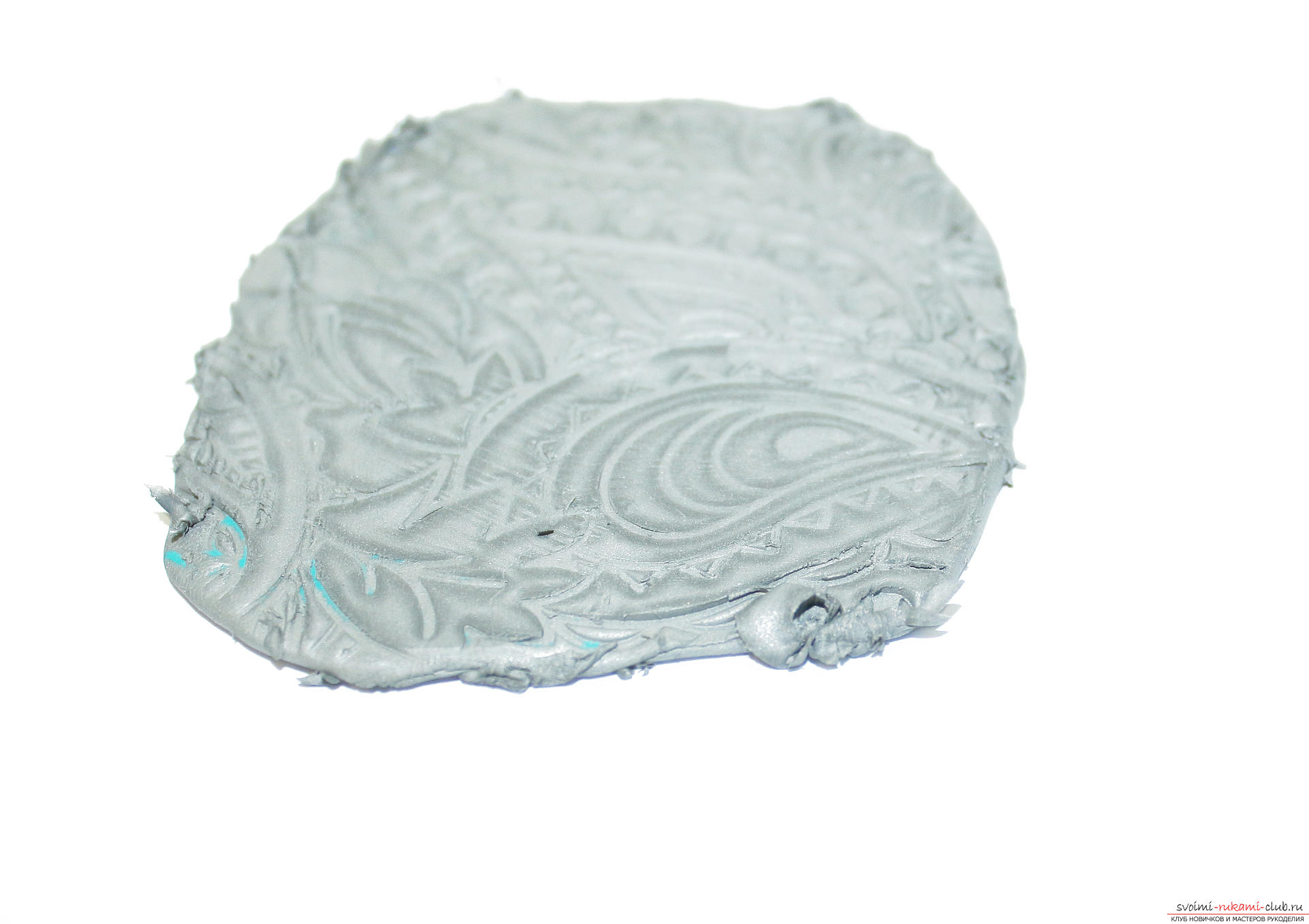 We print the texture on a green-blue slice and roll a thick sausage from the weed material.
We print the texture on a green-blue slice and roll a thick sausage from the weed material. 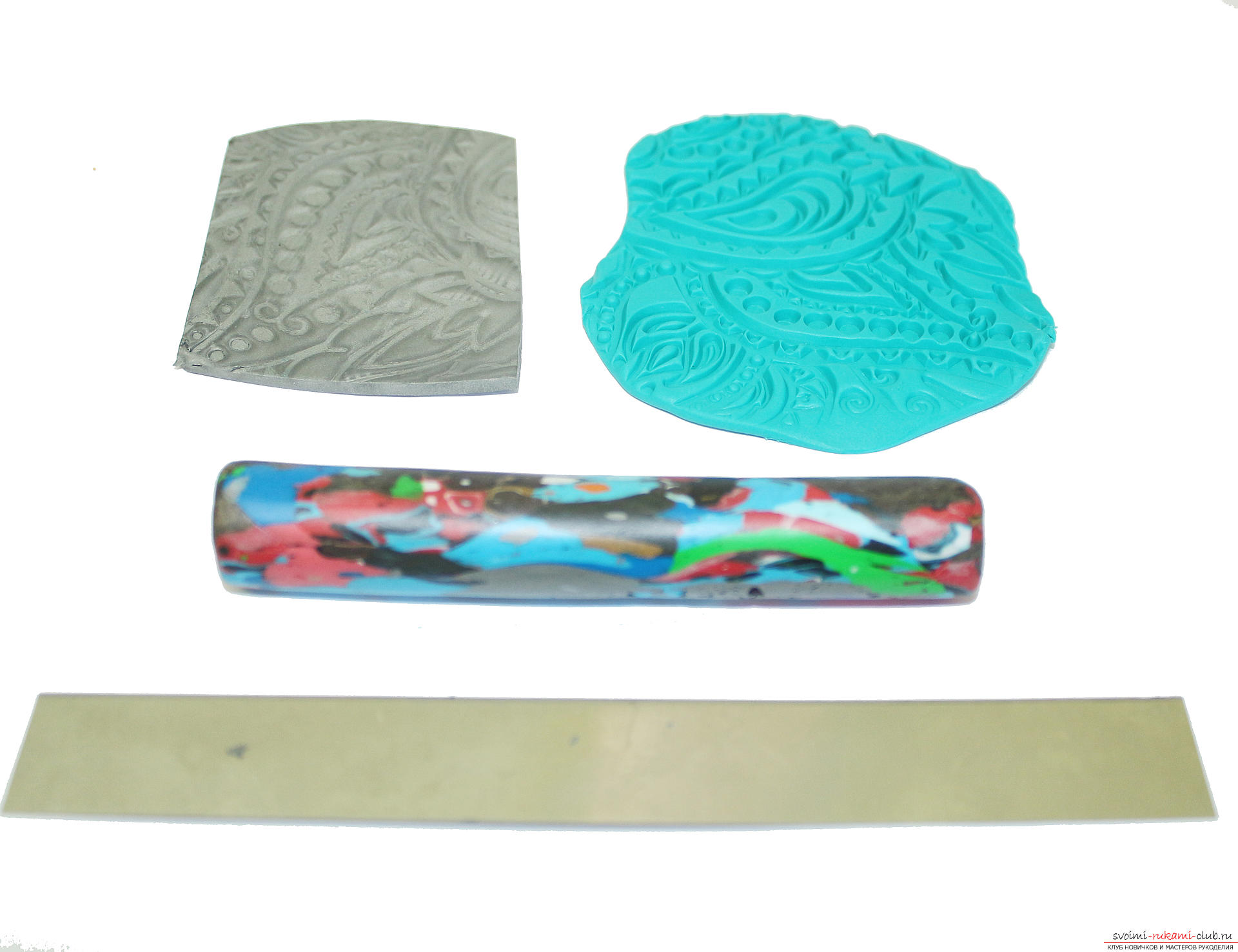 Turn the sausage around with silver plastic, drawing out. The edges are extremely flat.
Turn the sausage around with silver plastic, drawing out. The edges are extremely flat. 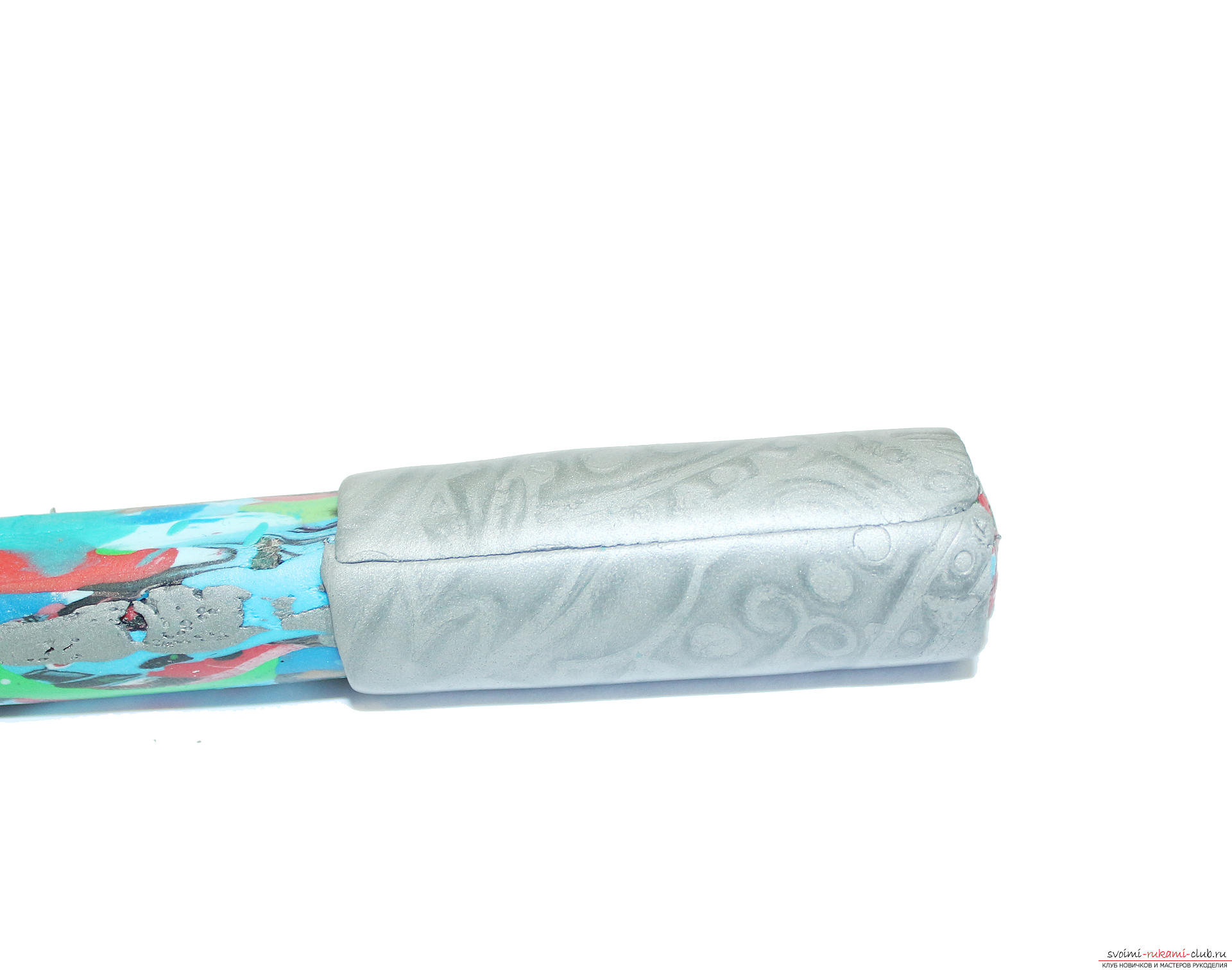 Toothpipe we grind the joint.
Toothpipe we grind the joint. 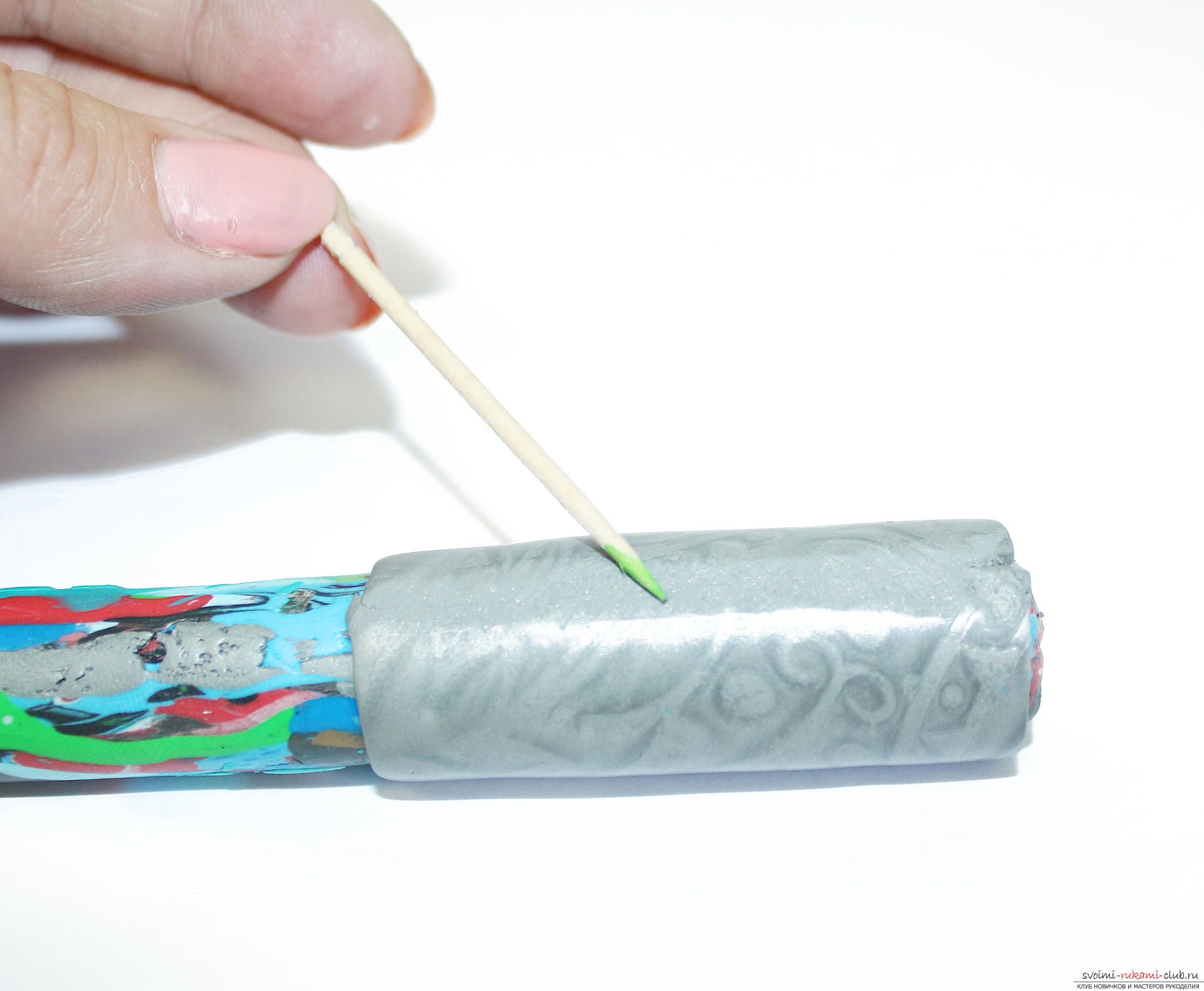 We cut silver sausage into 4 equal parts.
We cut silver sausage into 4 equal parts. 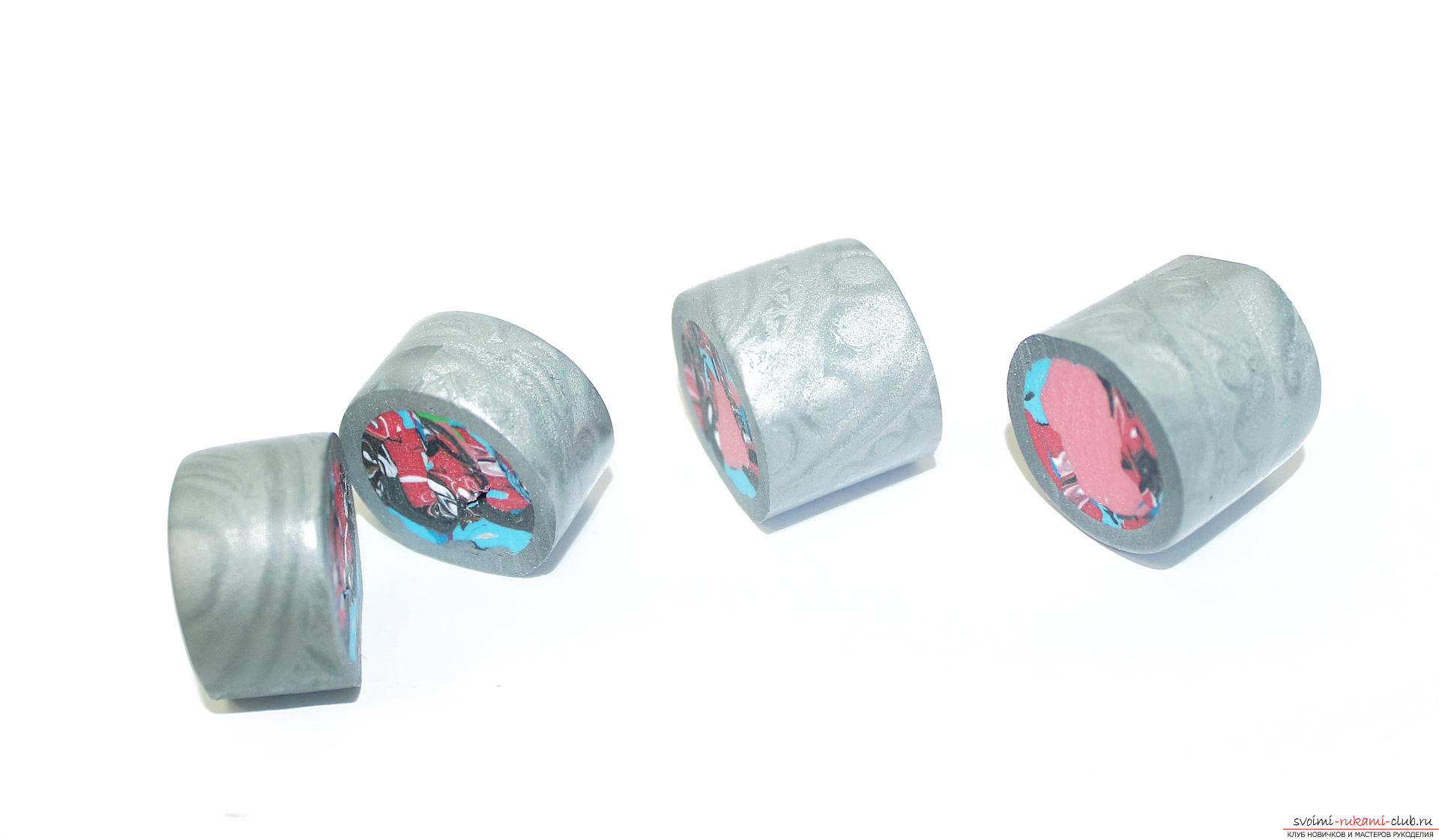 We put them on their sides, we drill holes in toothpicks.
We put them on their sides, we drill holes in toothpicks.  The remaining piece of weed sausage is wrapped in green-blue textured plastic.
The remaining piece of weed sausage is wrapped in green-blue textured plastic. 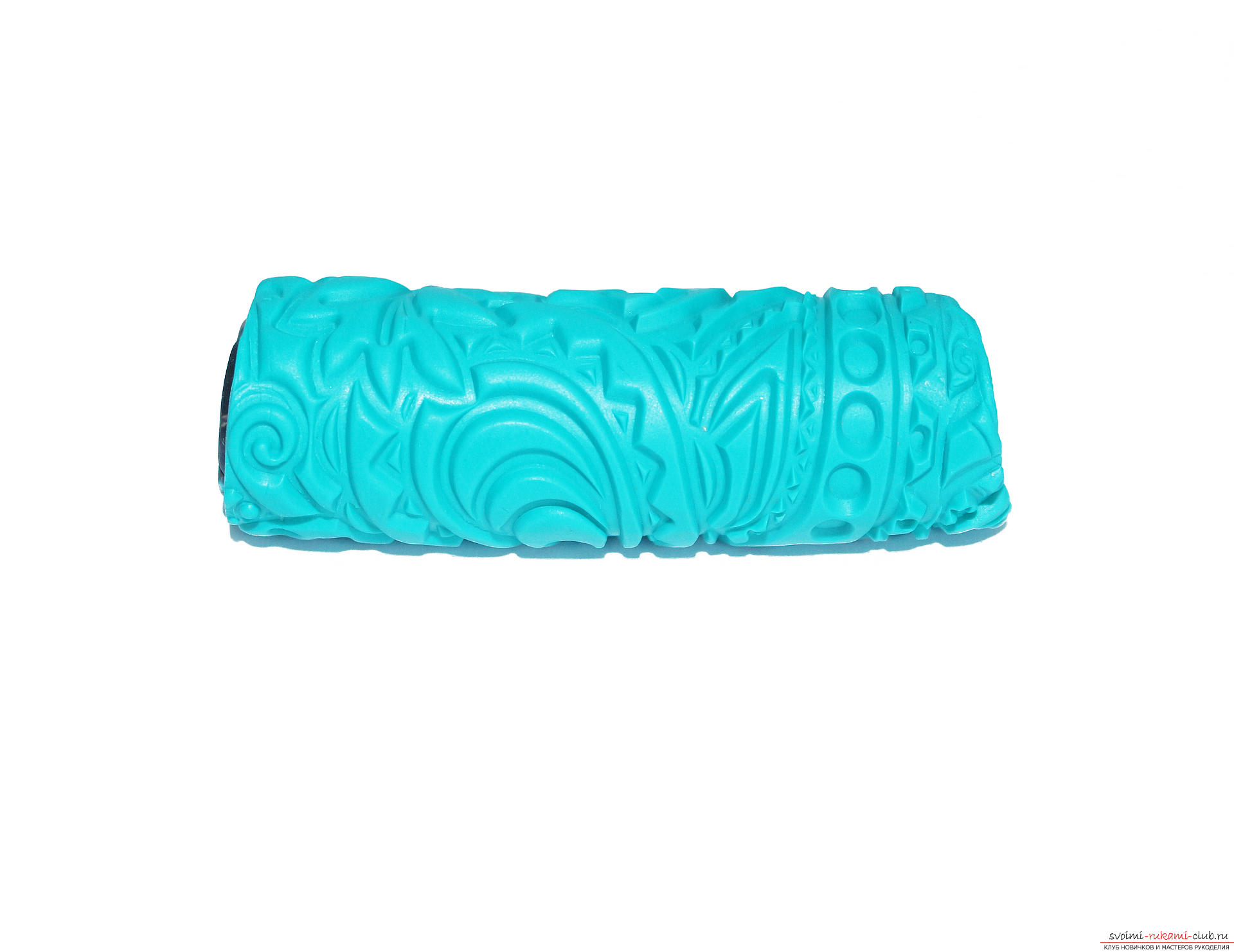 Also join the edges with a toothpick.
Also join the edges with a toothpick. 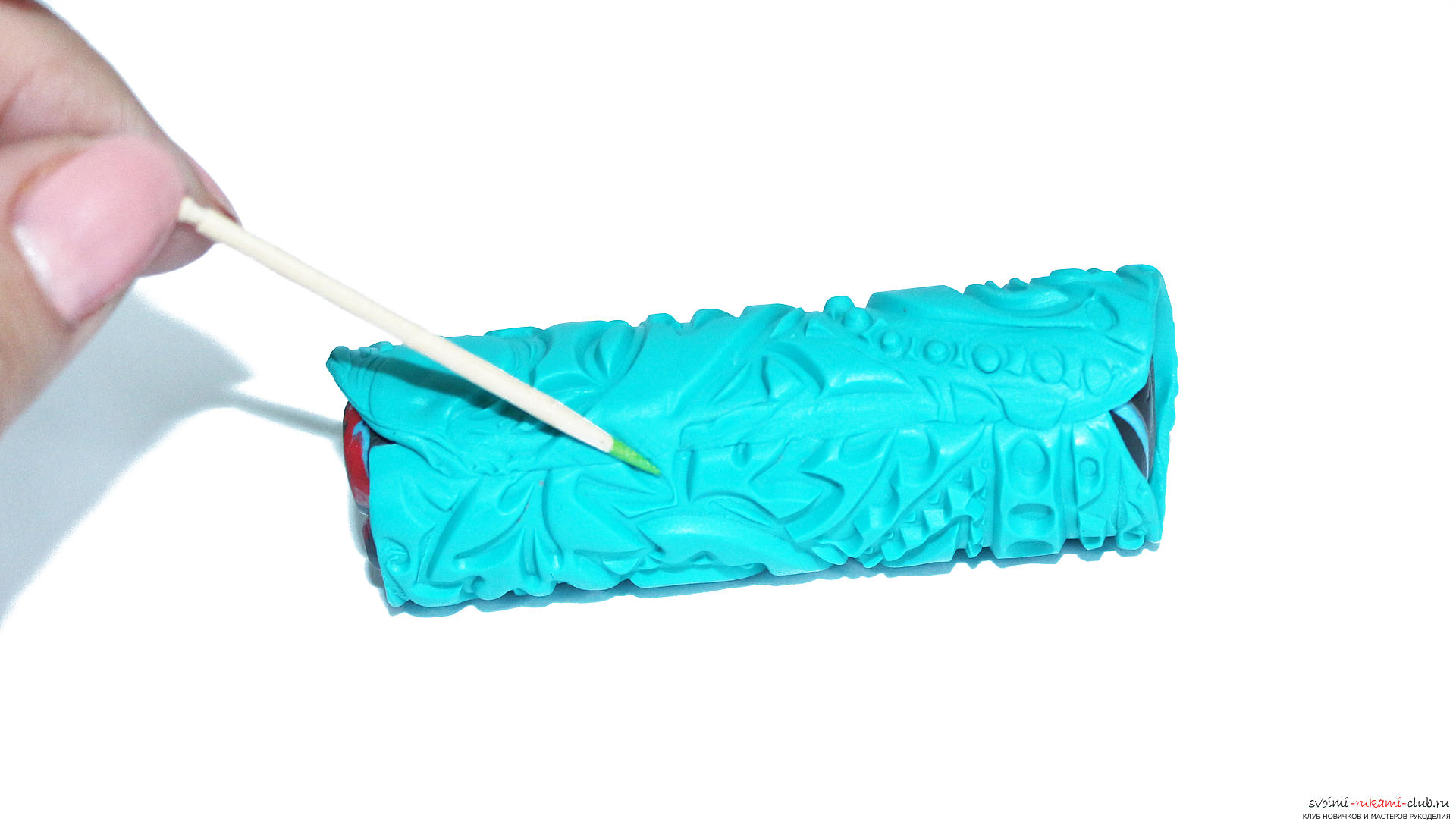 We cut into three parts, the central part is bigger than the lateral ones. Also put on the side and make holes with a toothpick.
We cut into three parts, the central part is bigger than the lateral ones. Also put on the side and make holes with a toothpick. 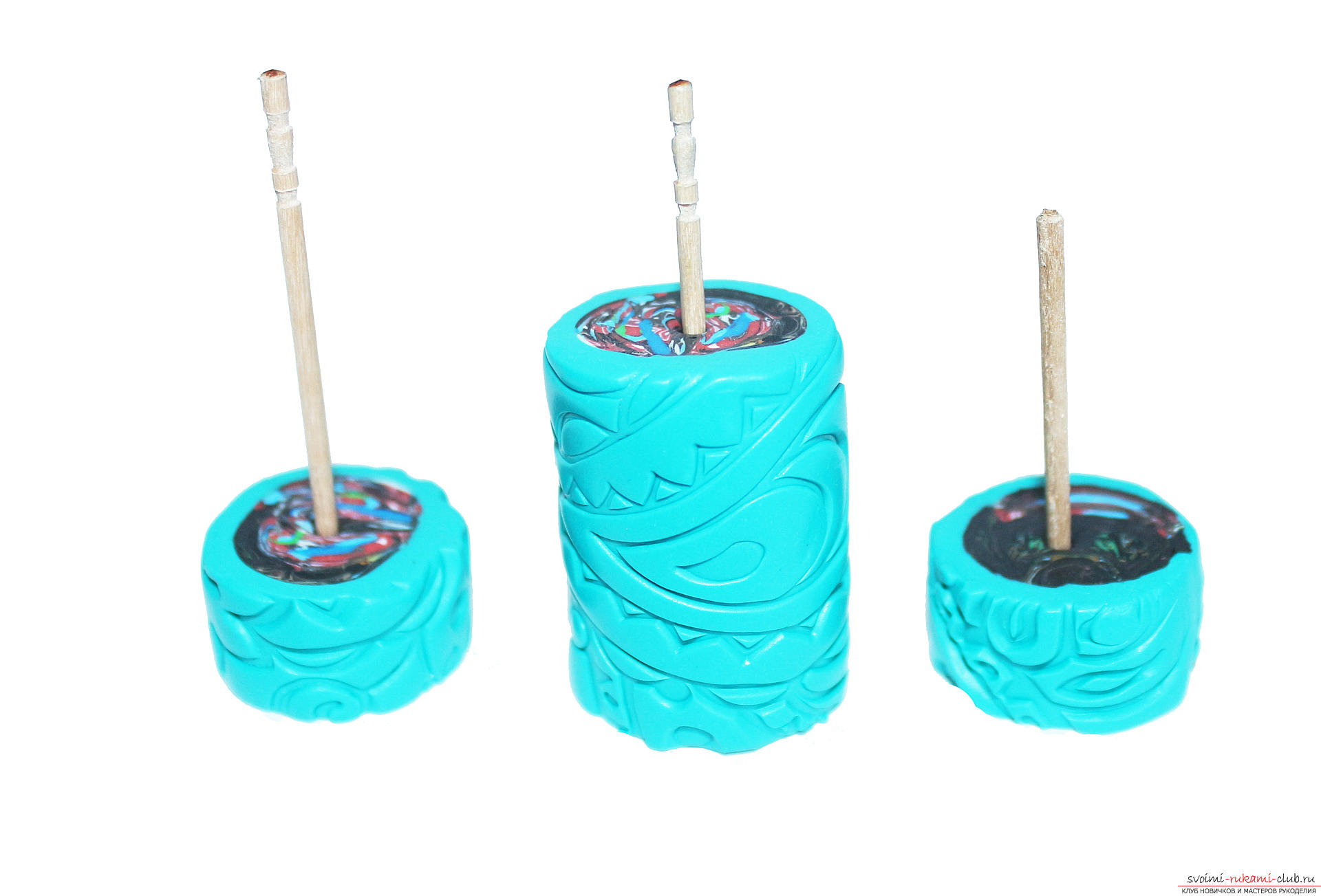 Mix the remnants of silver and green-blue plastic with fimo gel until the liquid state.
Mix the remnants of silver and green-blue plastic with fimo gel until the liquid state. 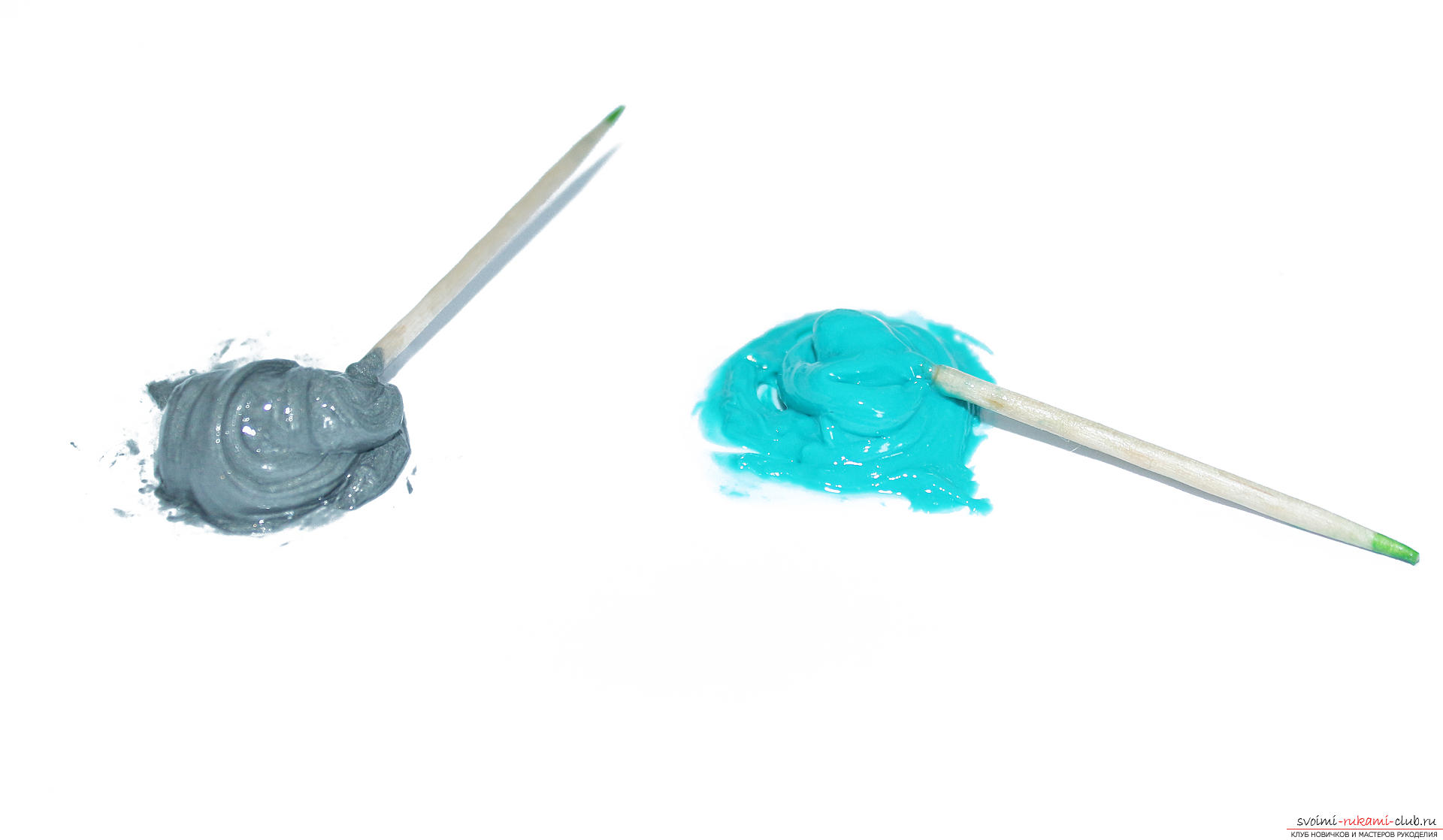 With a toothpick, we apply liquid color plastic of the appropriate color to the side parts of the beads.
With a toothpick, we apply liquid color plastic of the appropriate color to the side parts of the beads. 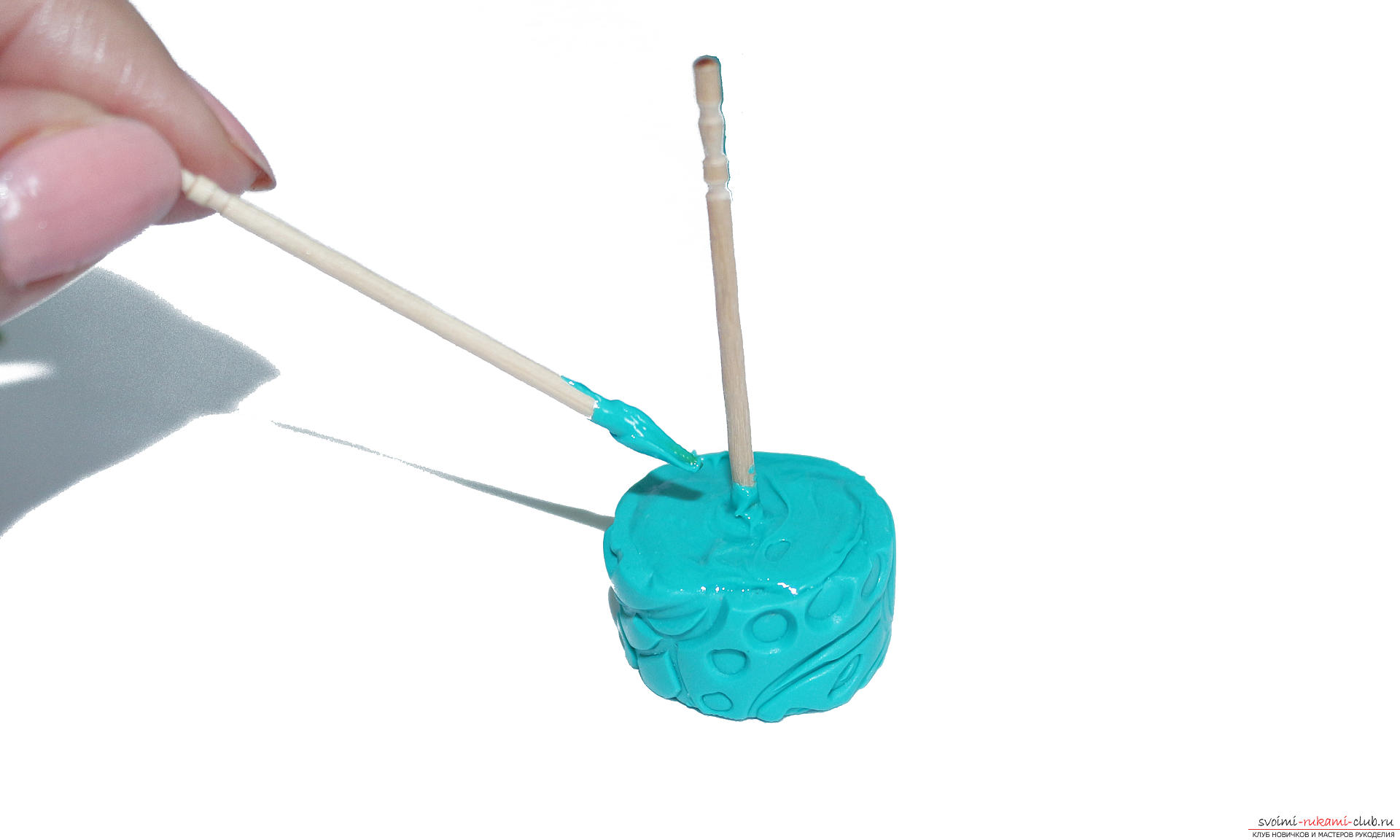 We cover the beads while only on one side and send them to bake.
We cover the beads while only on one side and send them to bake.  While the beads are baked, from the texturedof silver plastic we carve a circle with a diameter of 4 cm, in it we make a hole 2 cm in the second cutter, we cut out an elongated figure from the same plastic by an edge. It will be a toggle lock, so we make a toothpick in the middle of the oblong and along the edge of the round figure. Also we send the oven.
While the beads are baked, from the texturedof silver plastic we carve a circle with a diameter of 4 cm, in it we make a hole 2 cm in the second cutter, we cut out an elongated figure from the same plastic by an edge. It will be a toggle lock, so we make a toothpick in the middle of the oblong and along the edge of the round figure. Also we send the oven. 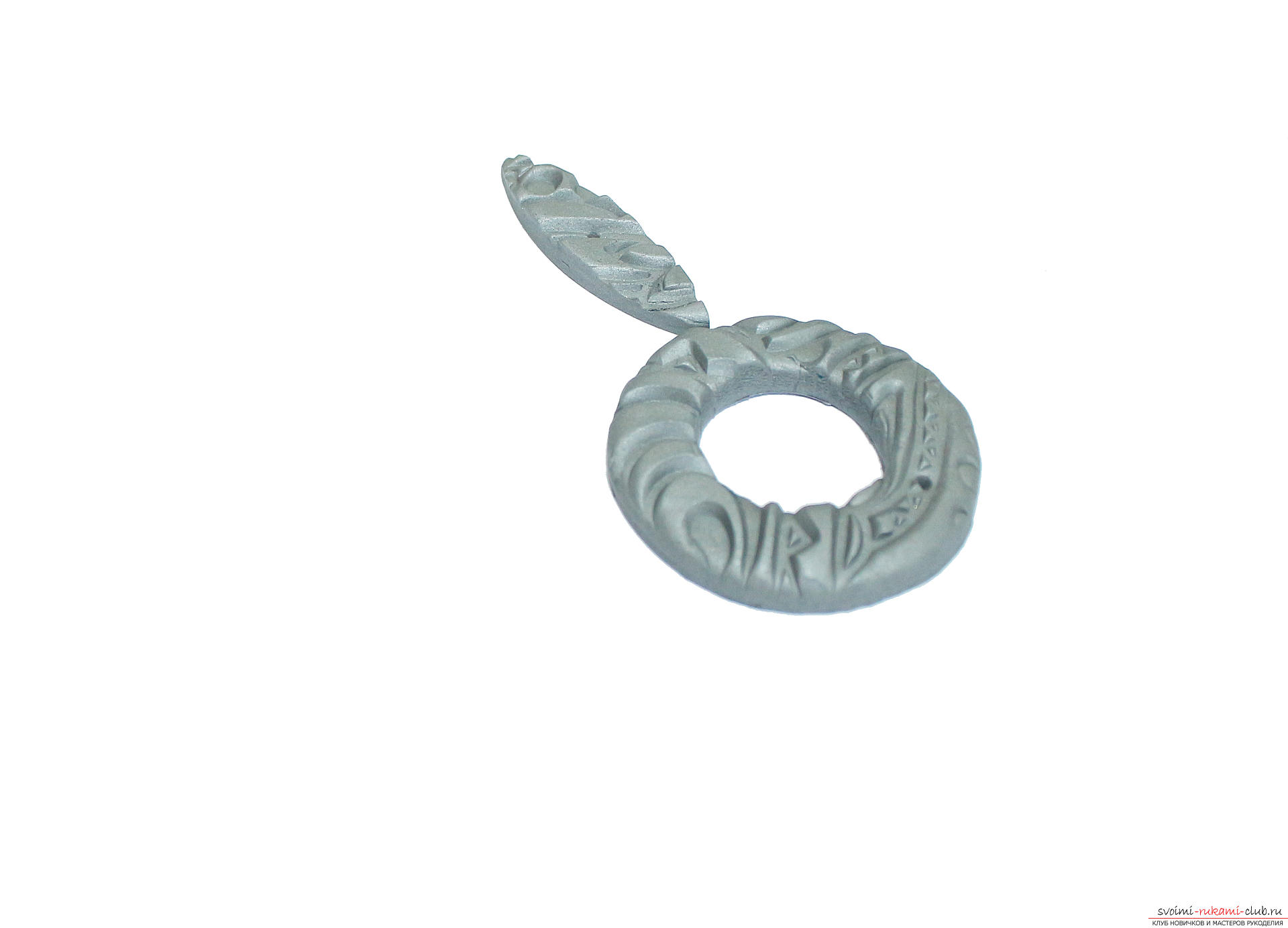 We take the beads out of the oven, we cool them,turn over, and smear with colored plastic on the other side, and again in the oven. At this stage we have: baked chips, toggle lock, 4 silver beads and 3 green-blue, if desired, silver beads can be varnished.
We take the beads out of the oven, we cool them,turn over, and smear with colored plastic on the other side, and again in the oven. At this stage we have: baked chips, toggle lock, 4 silver beads and 3 green-blue, if desired, silver beads can be varnished. 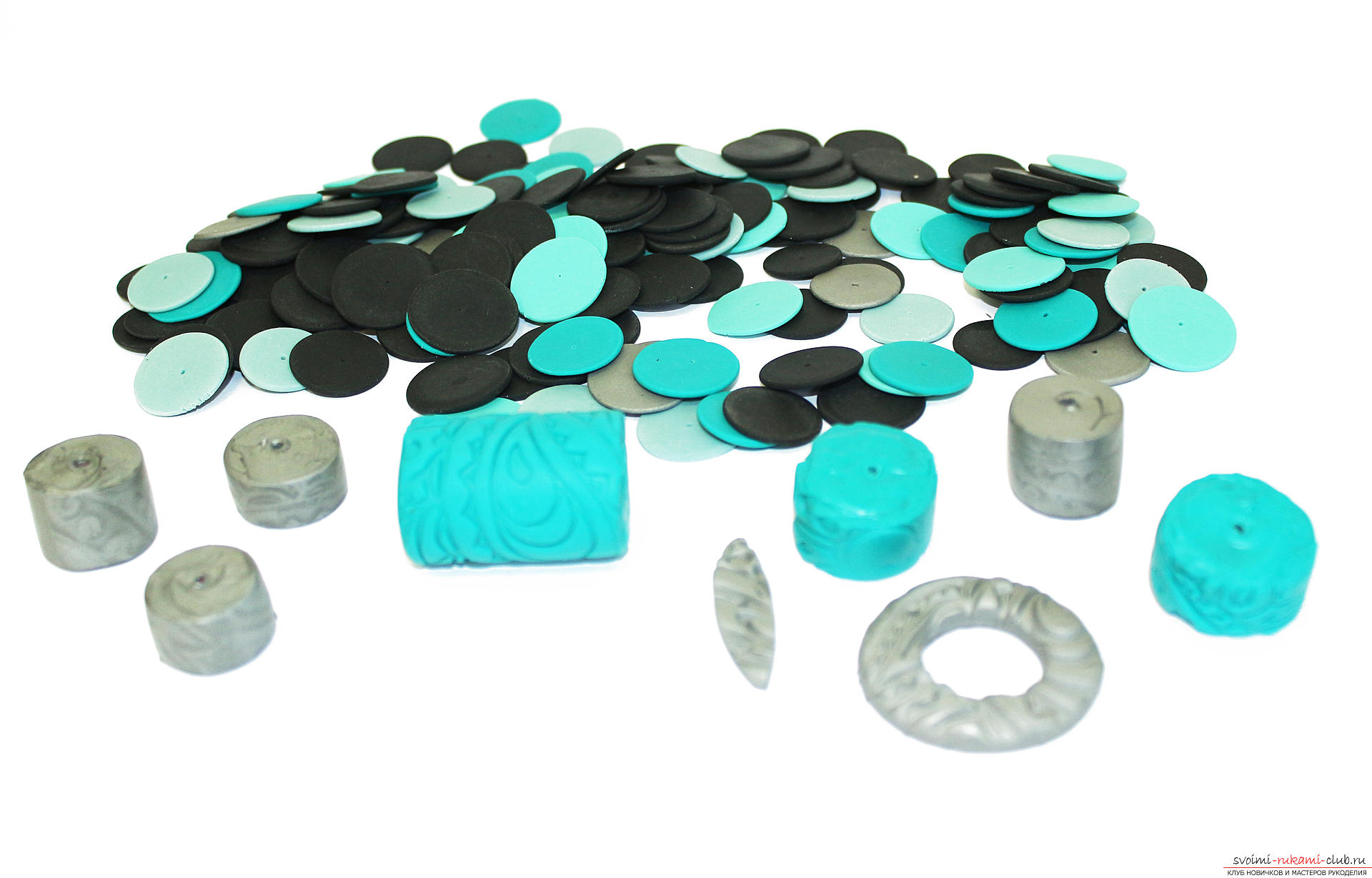 Green-blue beads are covered with gray acrylic paint.
Green-blue beads are covered with gray acrylic paint. 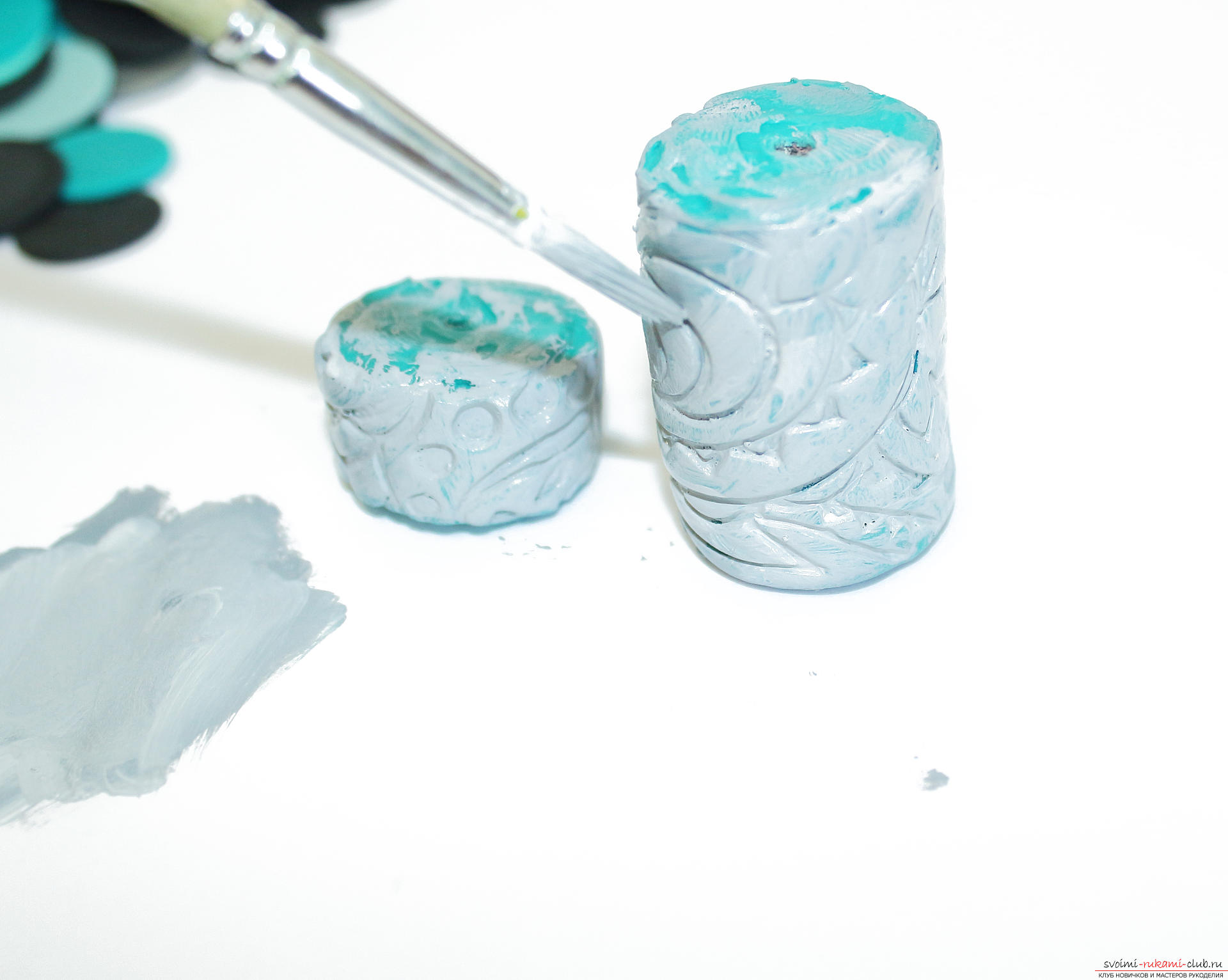 After drying the paint, we erase the top layer with the help of cotton wool discs and nail polish remover.
After drying the paint, we erase the top layer with the help of cotton wool discs and nail polish remover. 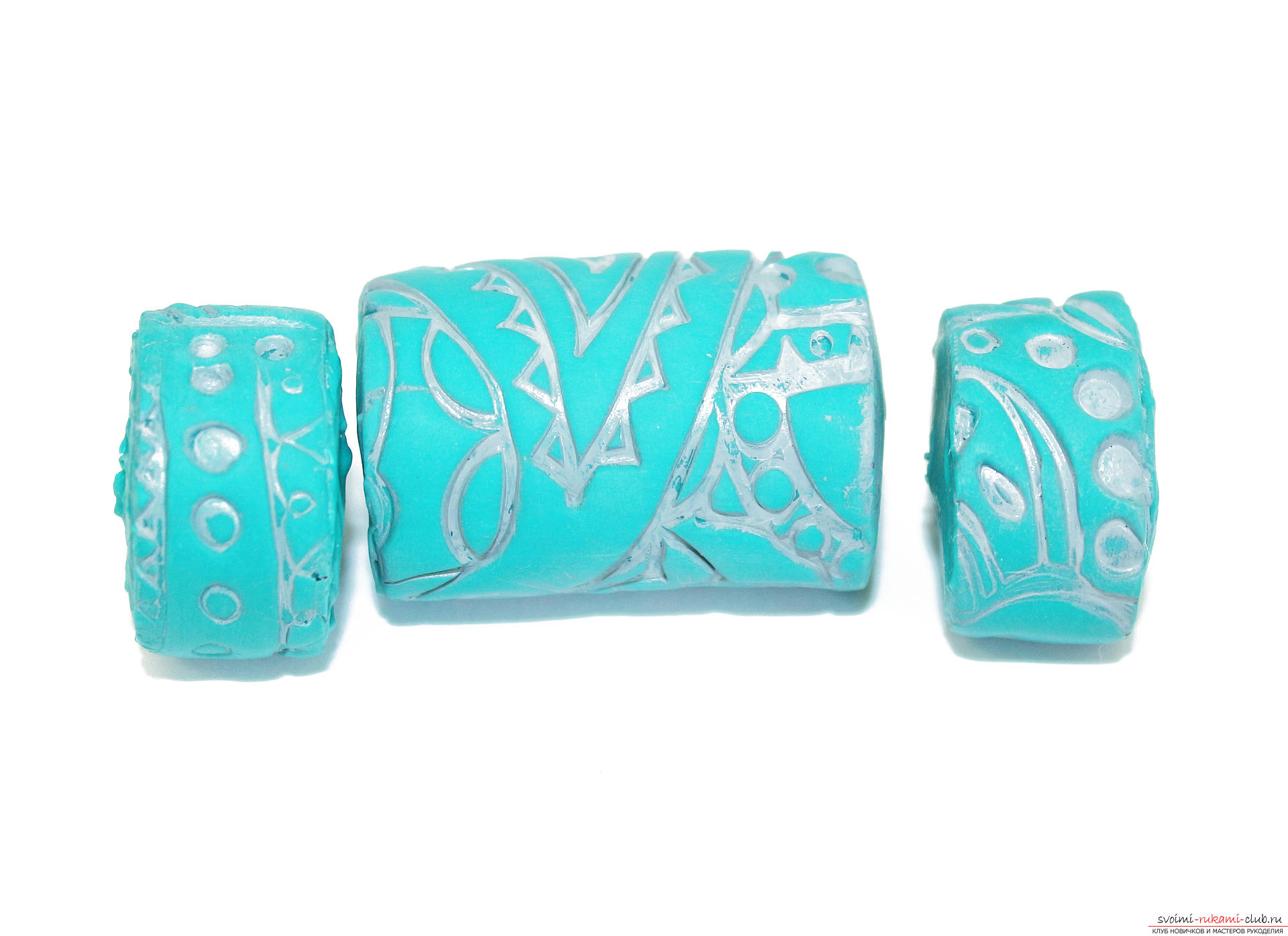 Collect the necklace on a nylon thread! It is really strong and will give mobility to such heavy beads.
Collect the necklace on a nylon thread! It is really strong and will give mobility to such heavy beads. 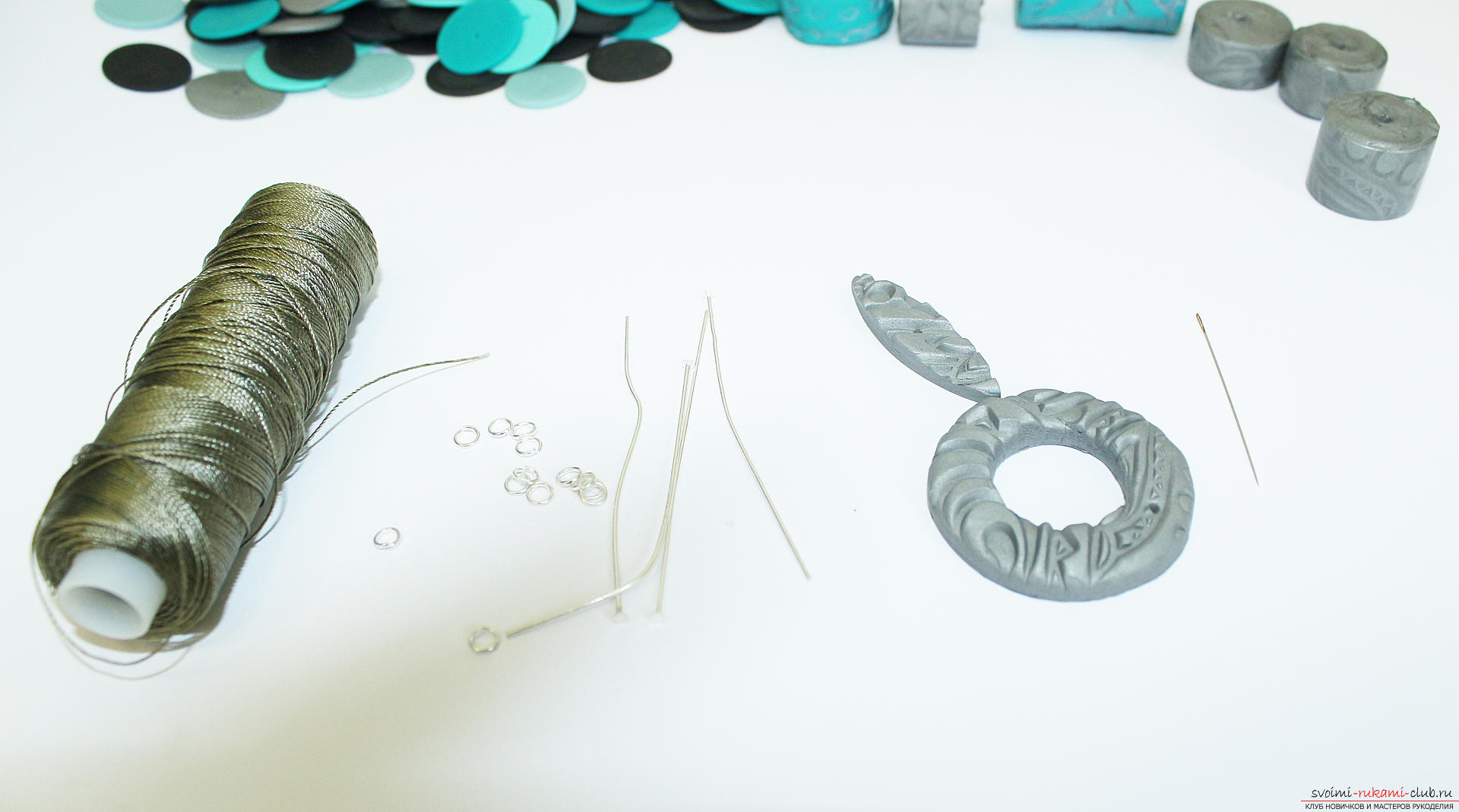 We take a pin with a cap and wind the thread on it. We tie knots, like macrame.
We take a pin with a cap and wind the thread on it. We tie knots, like macrame. 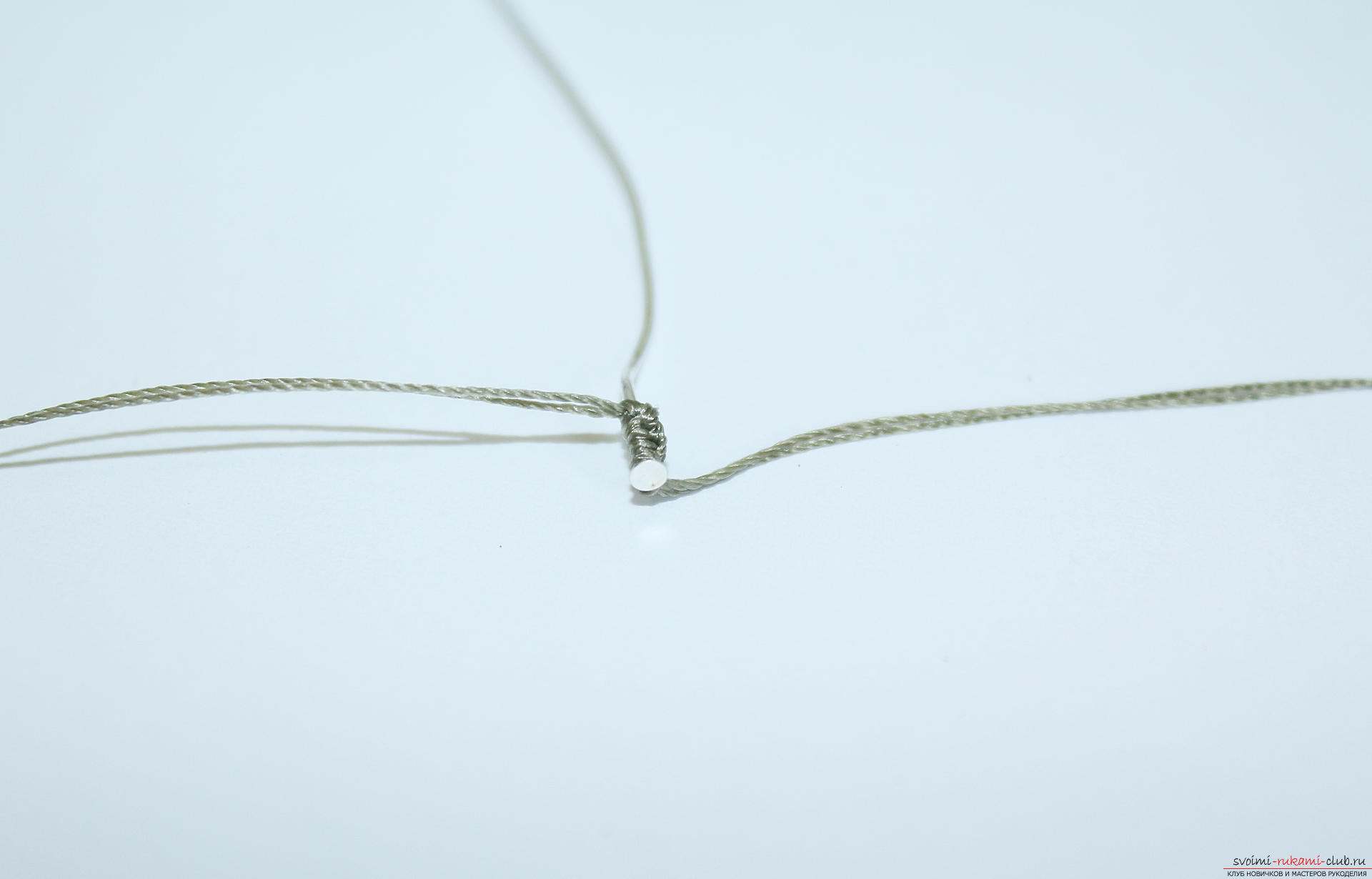 We pass this pin into the bead together with the edge of the double thread.
We pass this pin into the bead together with the edge of the double thread. 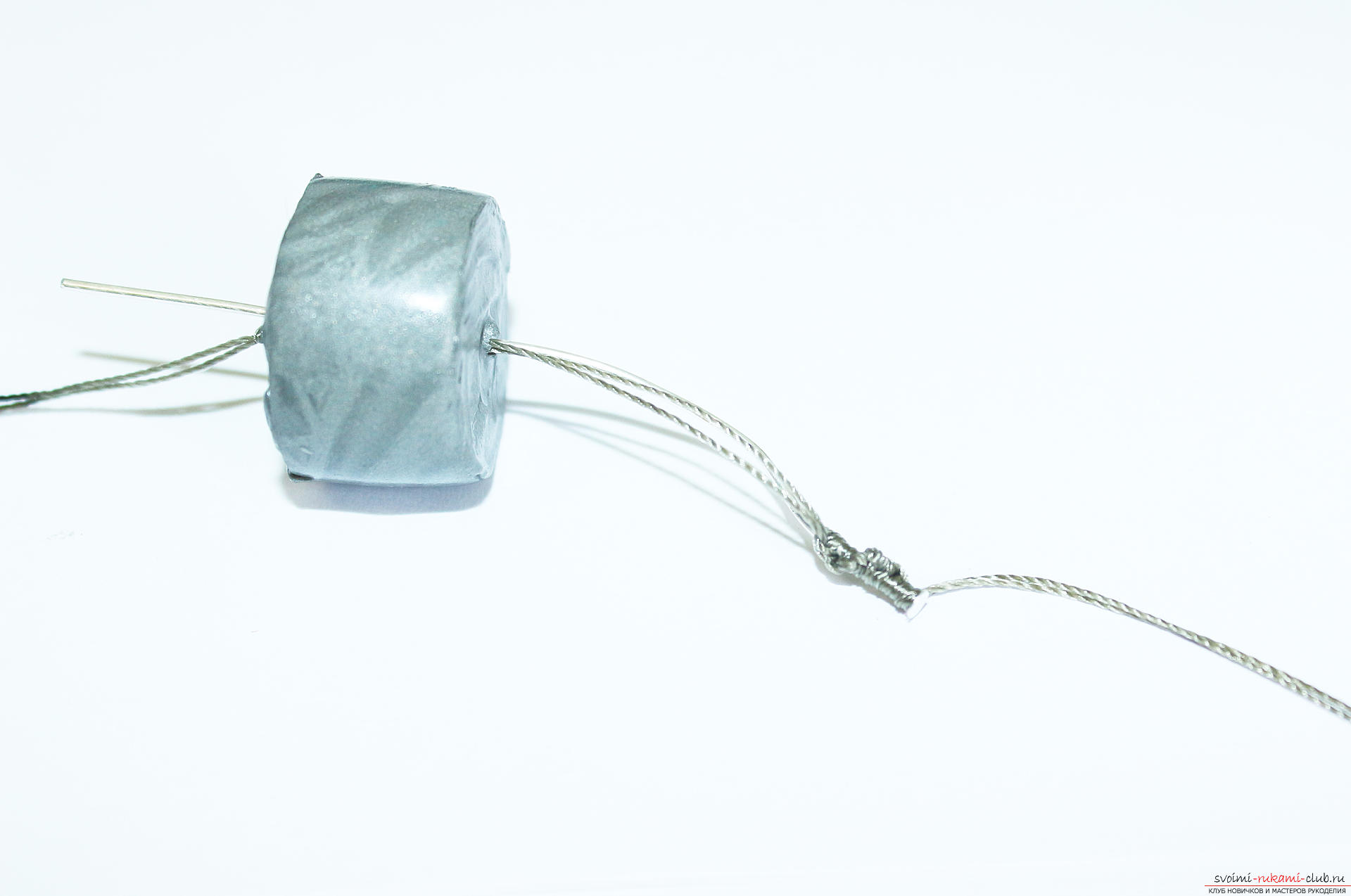 Lubricate the nodules and part of the pin, which will be hidden by a bead, super-glue.
Lubricate the nodules and part of the pin, which will be hidden by a bead, super-glue. 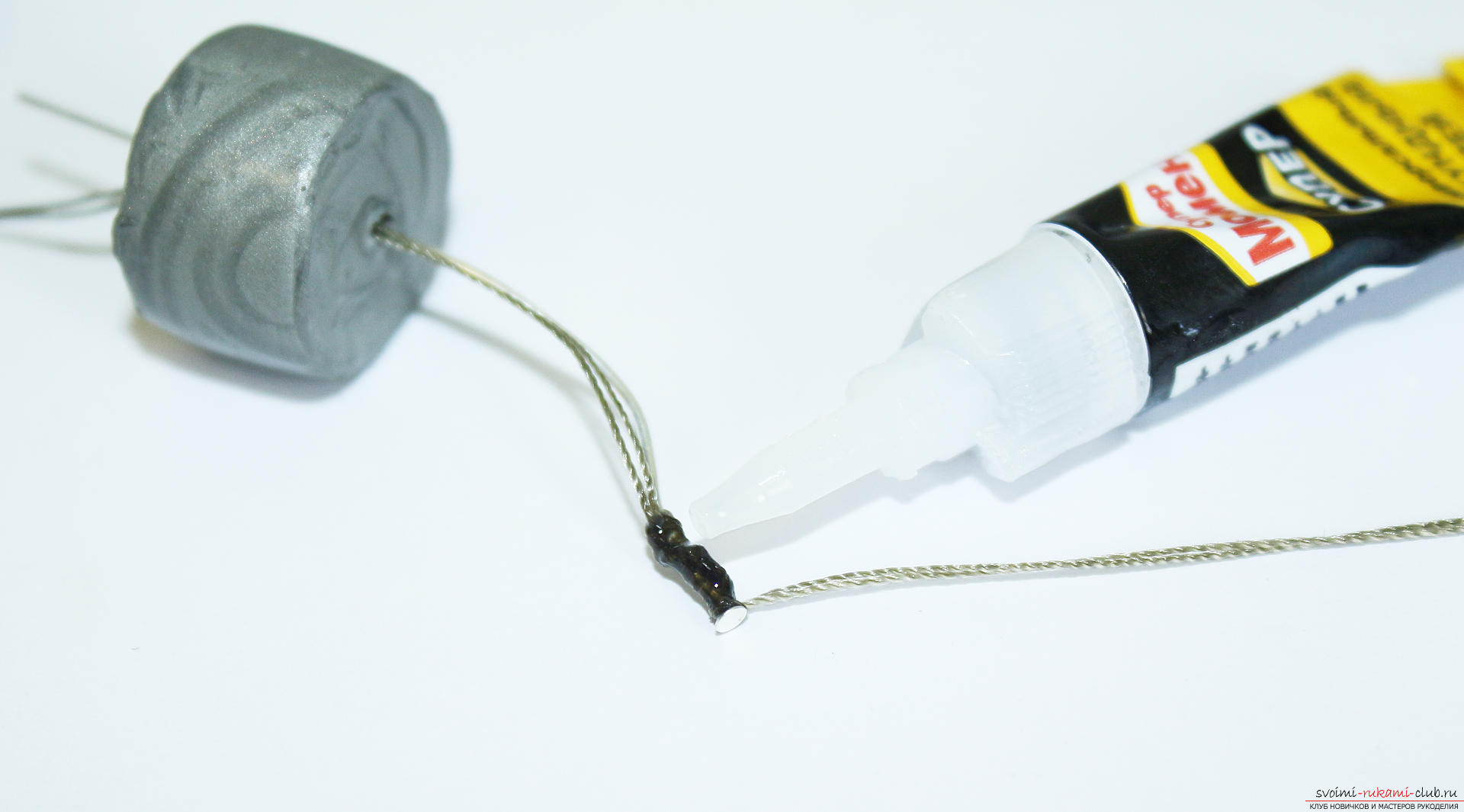 With a sharp and precise movement, push the pin all the way into the bead. On the one hand, the bead sticks out of the bead, on the other - a double thread.
With a sharp and precise movement, push the pin all the way into the bead. On the one hand, the bead sticks out of the bead, on the other - a double thread.  We put the thread in the needle and string the beads interspersed with the chips. The order of ANY, the only, biggest bead should be in the center and a large bead next to the lock. For balance.
We put the thread in the needle and string the beads interspersed with the chips. The order of ANY, the only, biggest bead should be in the center and a large bead next to the lock. For balance. 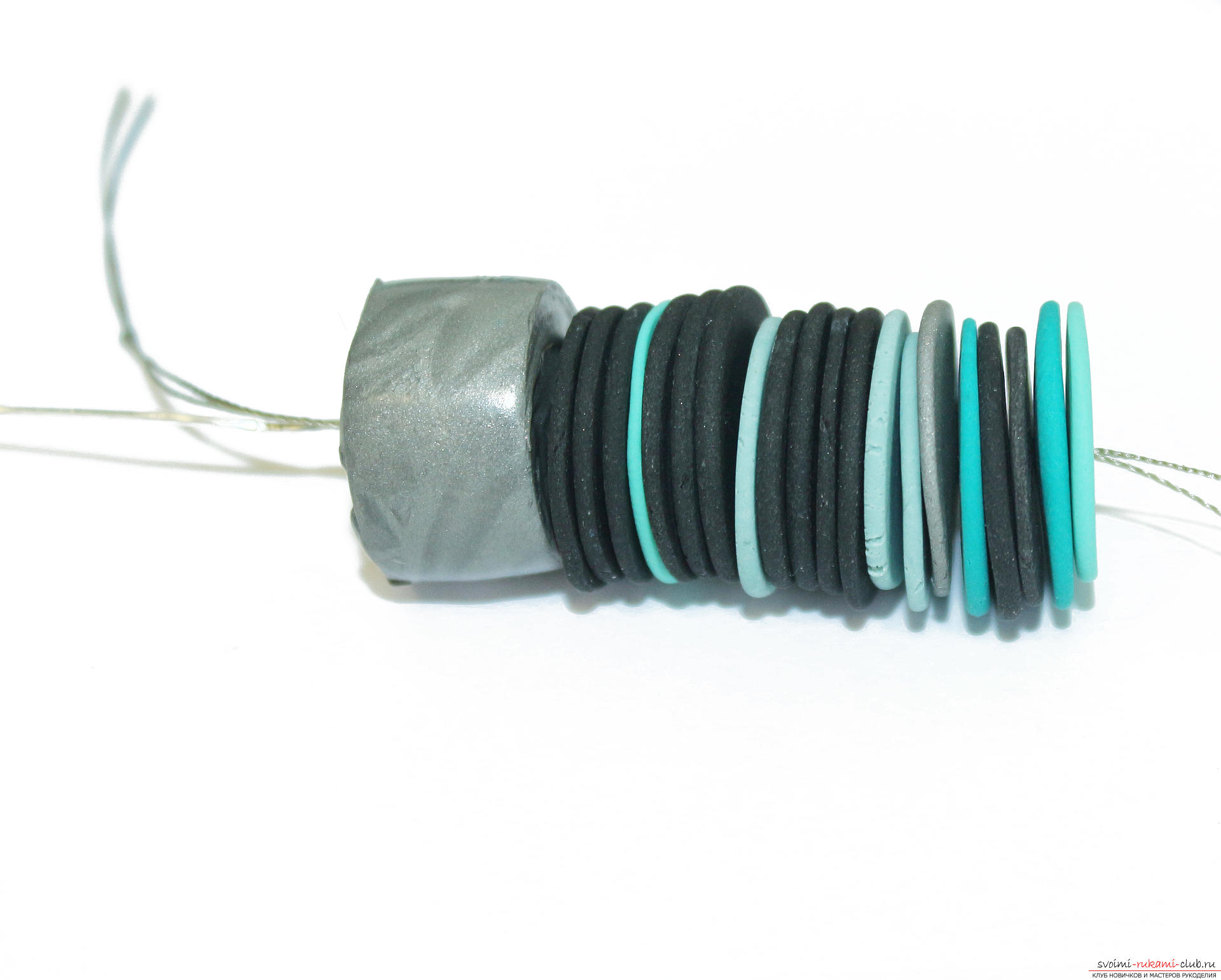 When all the elements are in place, tighten the thread. End to end with the last chipin we pin.
When all the elements are in place, tighten the thread. End to end with the last chipin we pin. 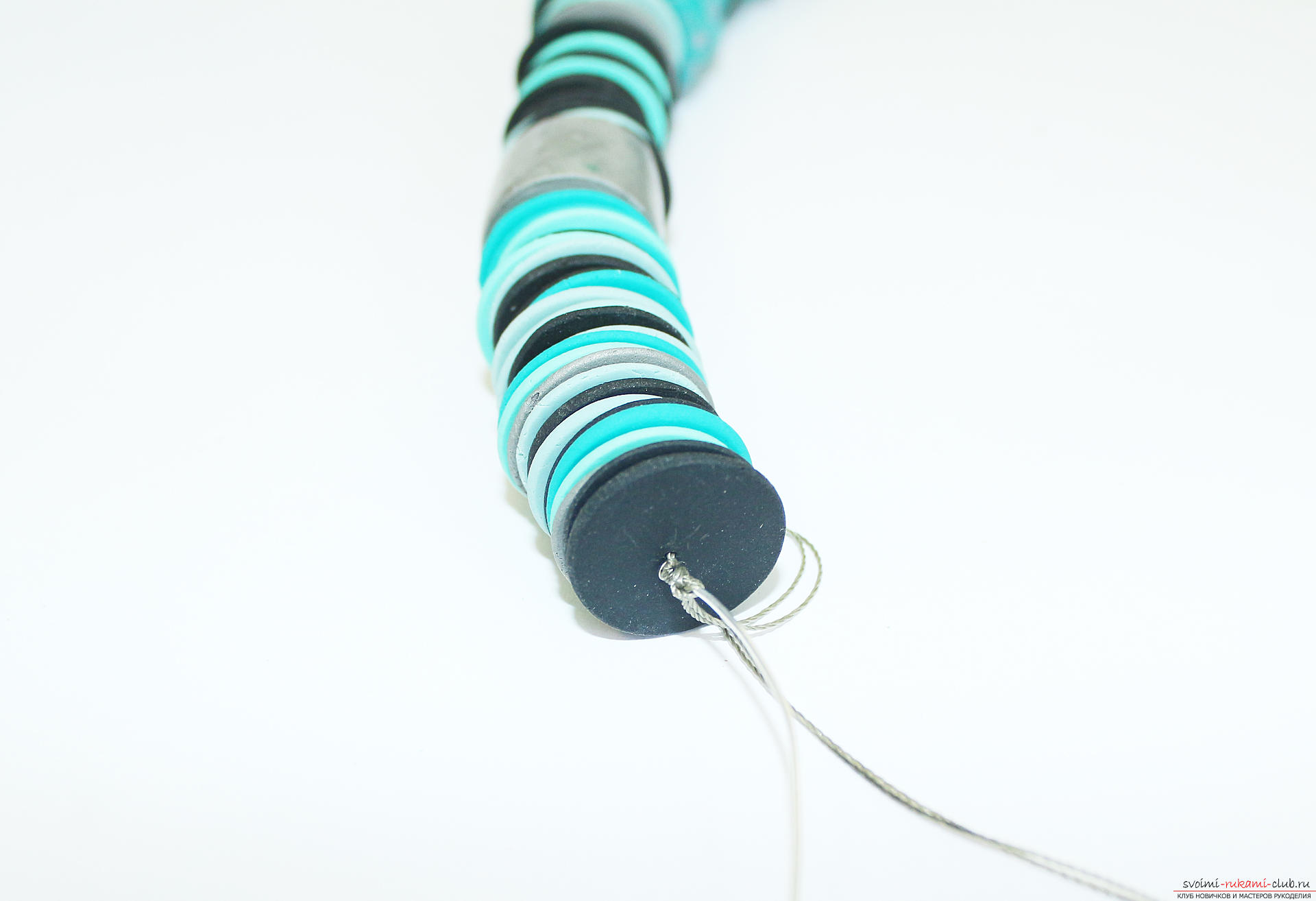
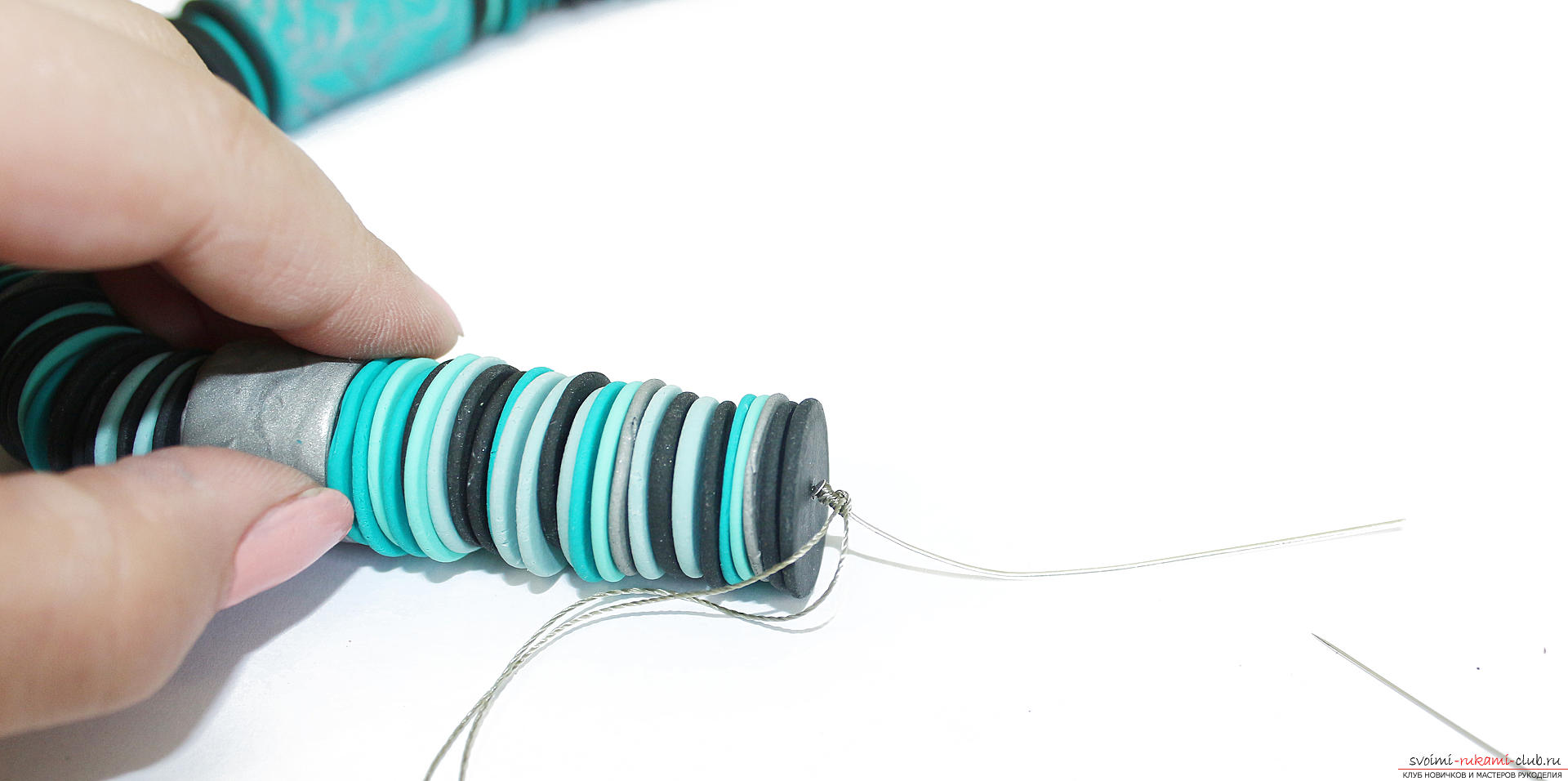 And repeat the focus with gluing.
And repeat the focus with gluing. 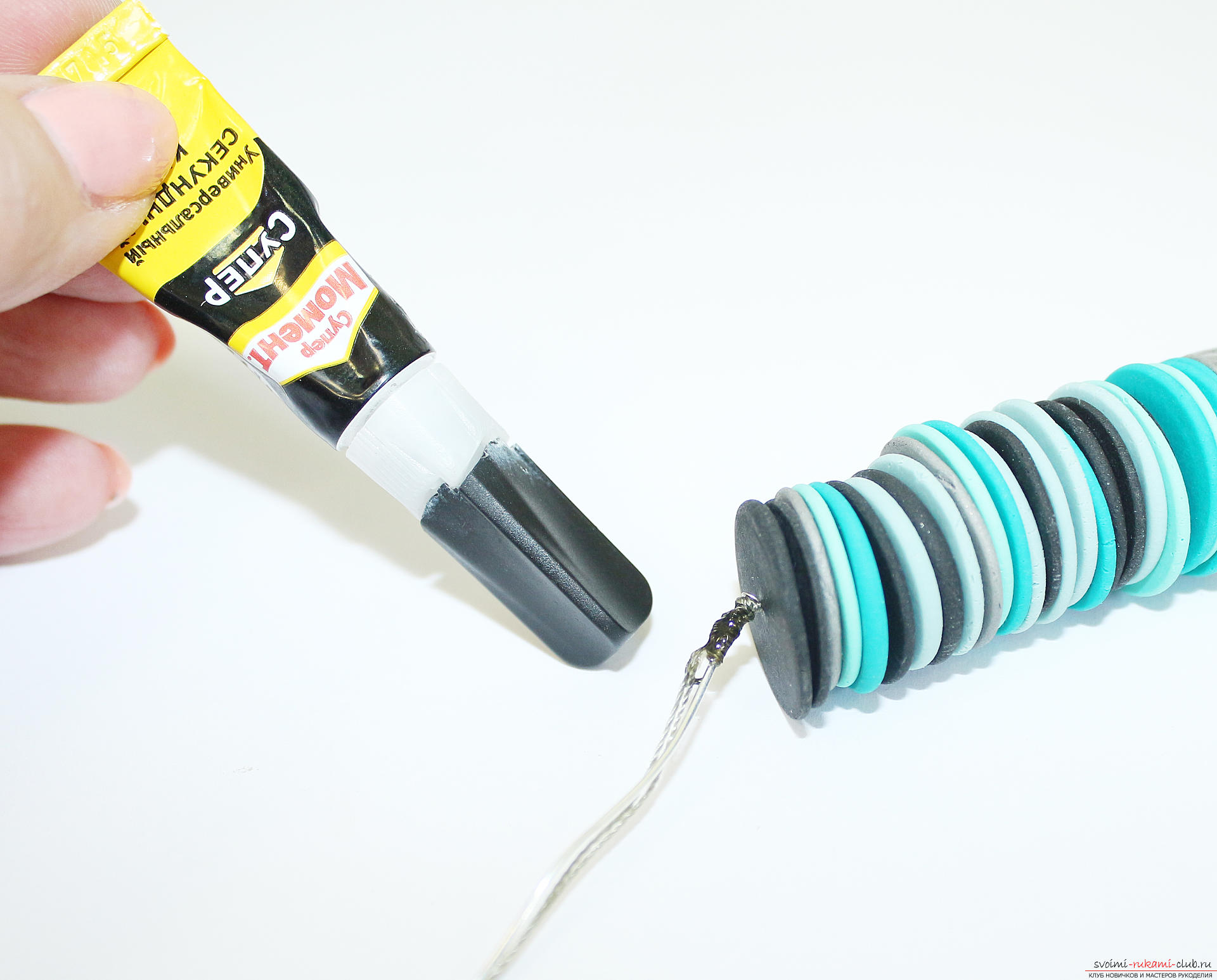 We get to surprisingly cool beads in the ethno-style! So far without a lock.
We get to surprisingly cool beads in the ethno-style! So far without a lock. 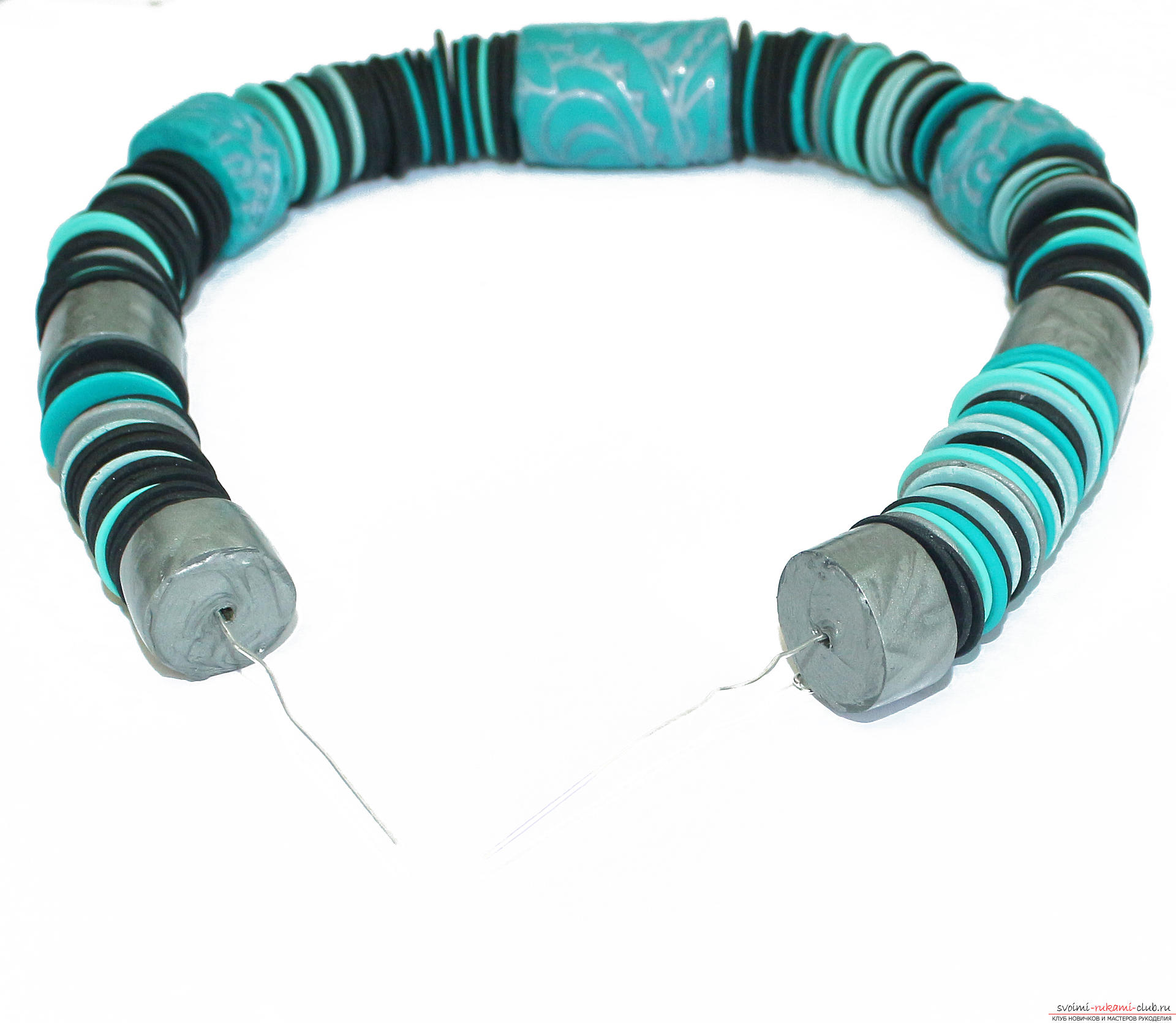 Roundworms twist the pins into springs.
Roundworms twist the pins into springs. 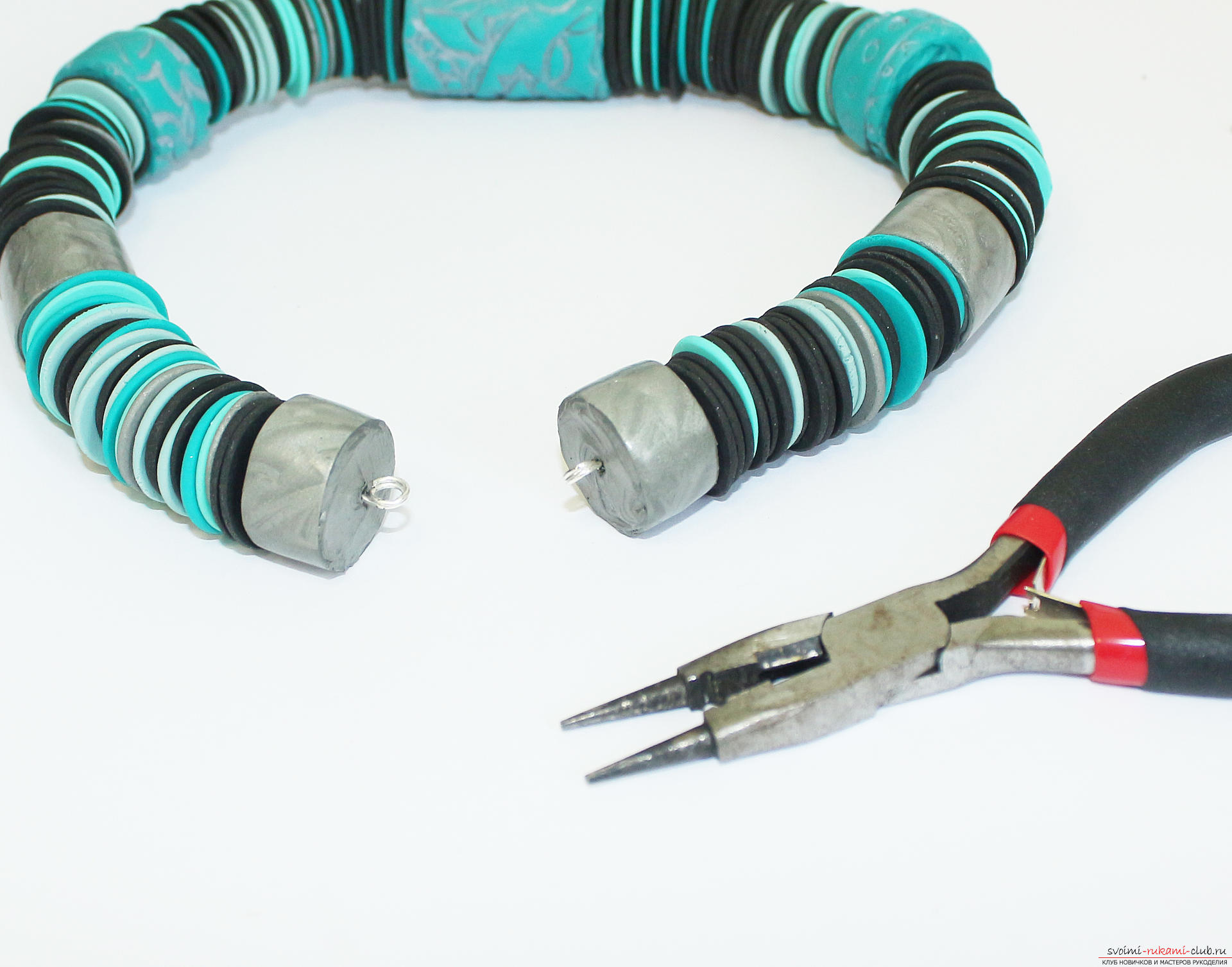 We insert a pin with a cap into each part of the lock-togla.
We insert a pin with a cap into each part of the lock-togla. 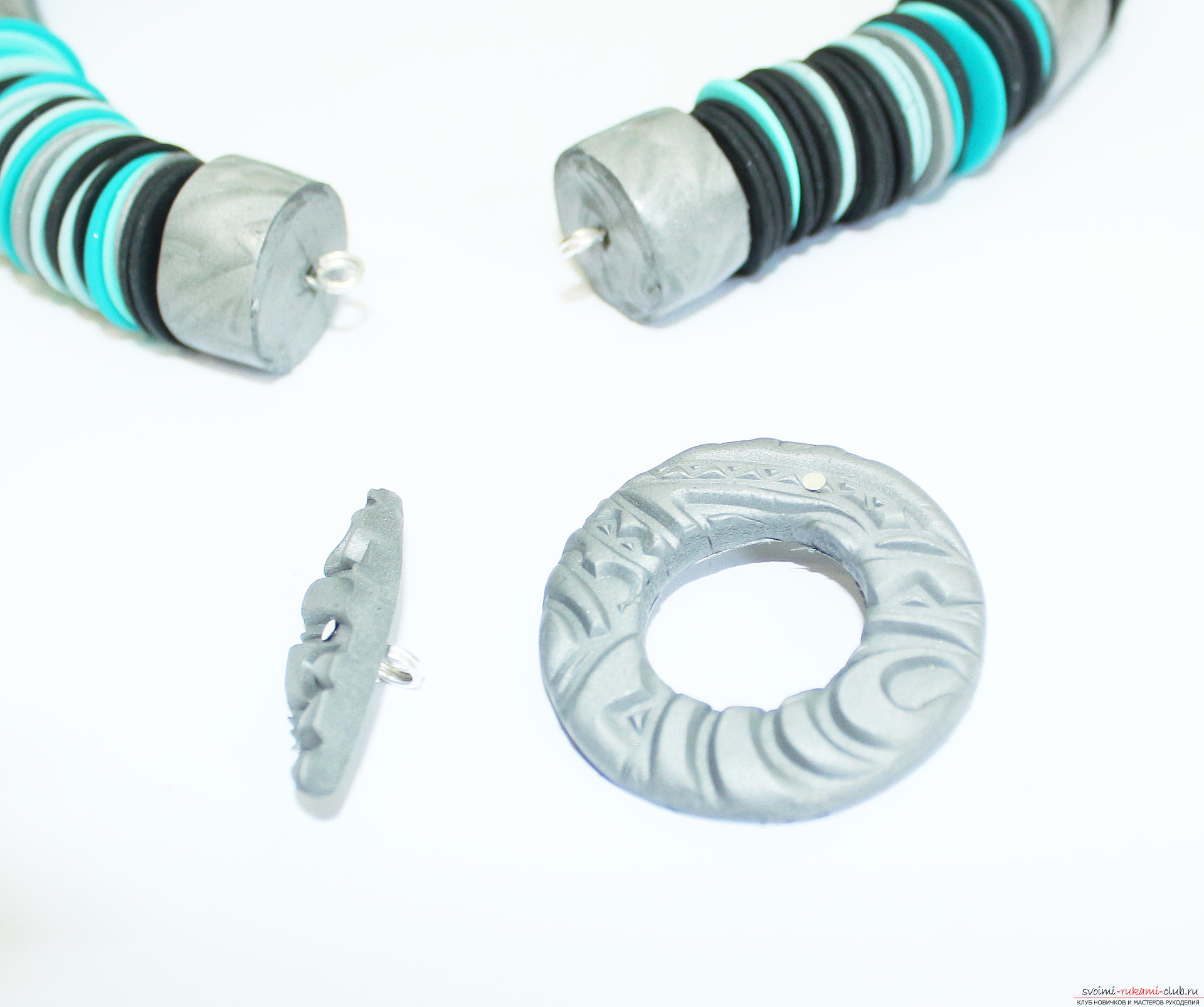 Just twist the edges of the pins into the springs.
Just twist the edges of the pins into the springs. 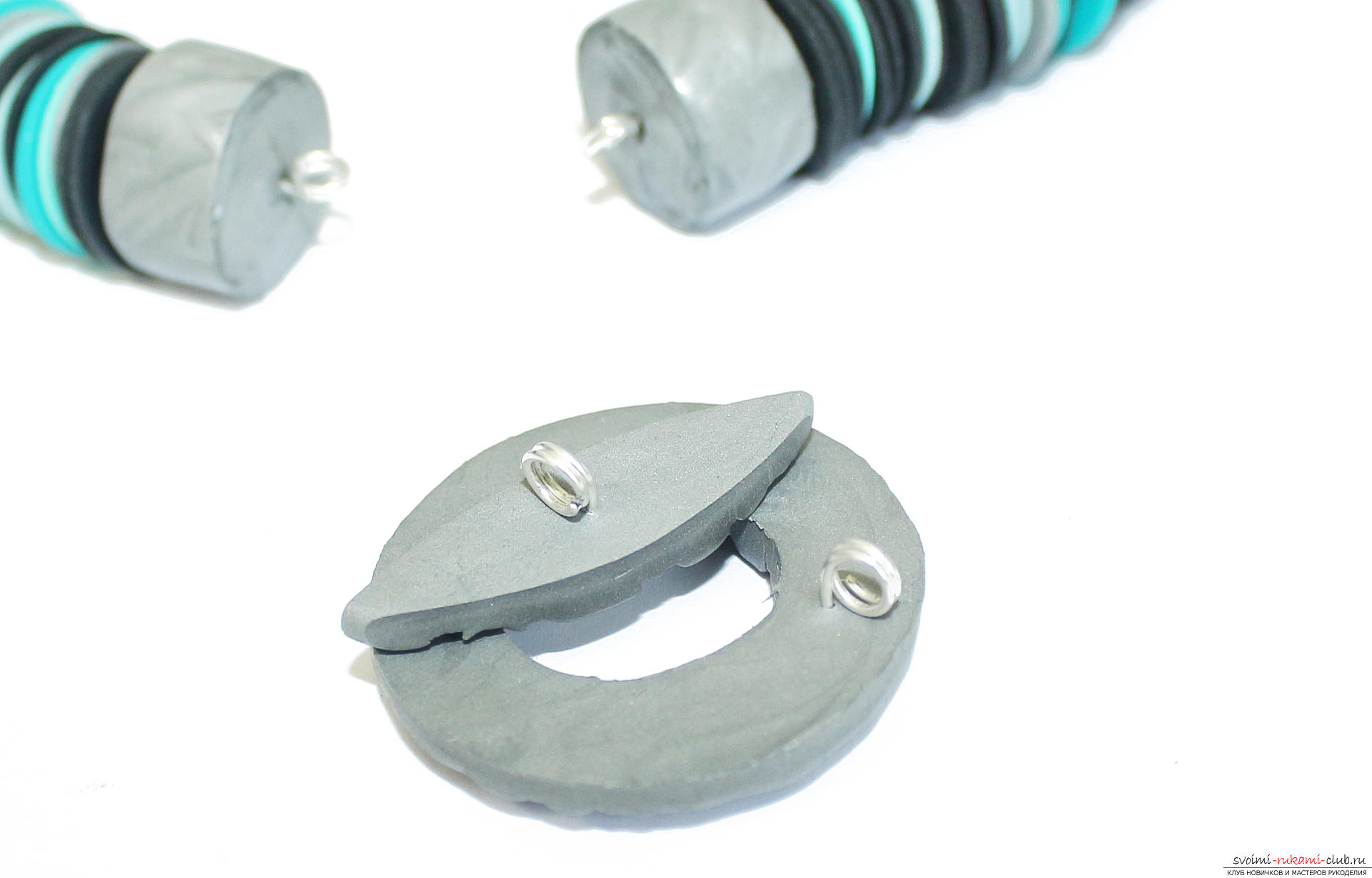 We attach the lock to the beads on the connecting rings.
We attach the lock to the beads on the connecting rings. 
 And we admire the result - the original decoration made of polymer clay is ready!
And we admire the result - the original decoration made of polymer clay is ready! 
